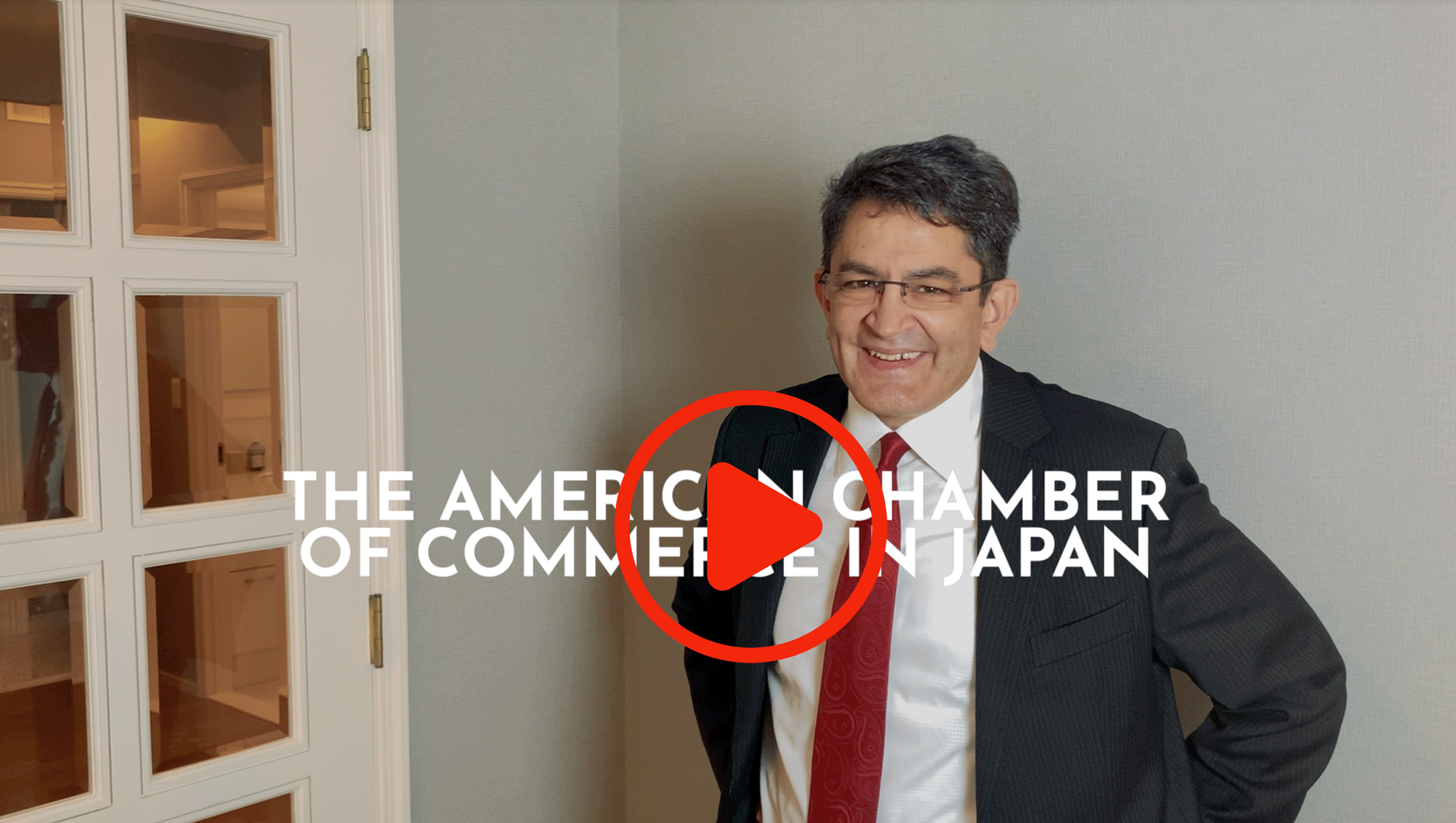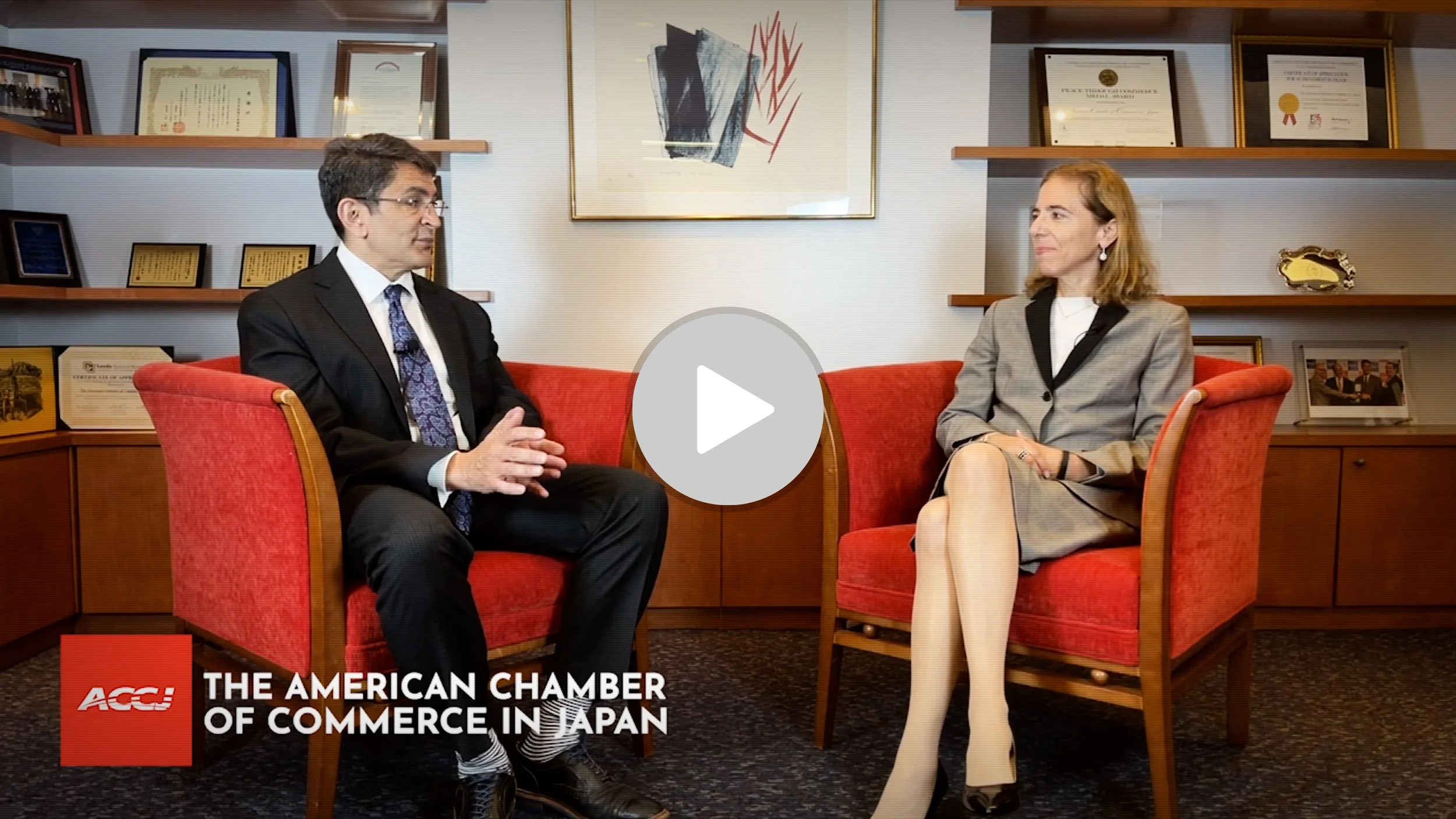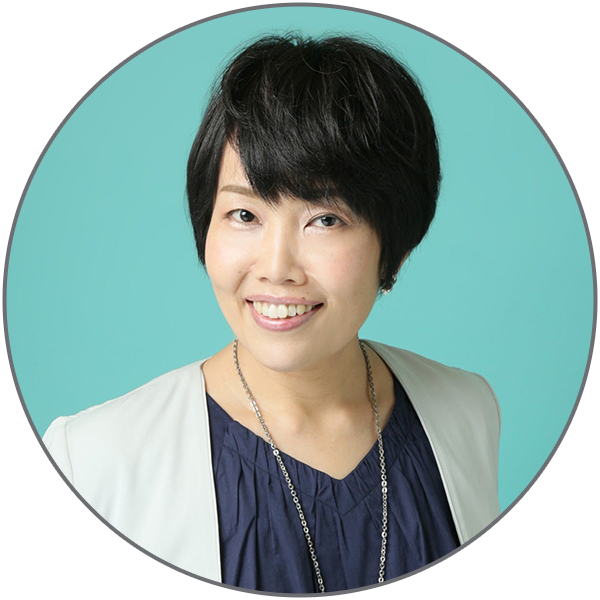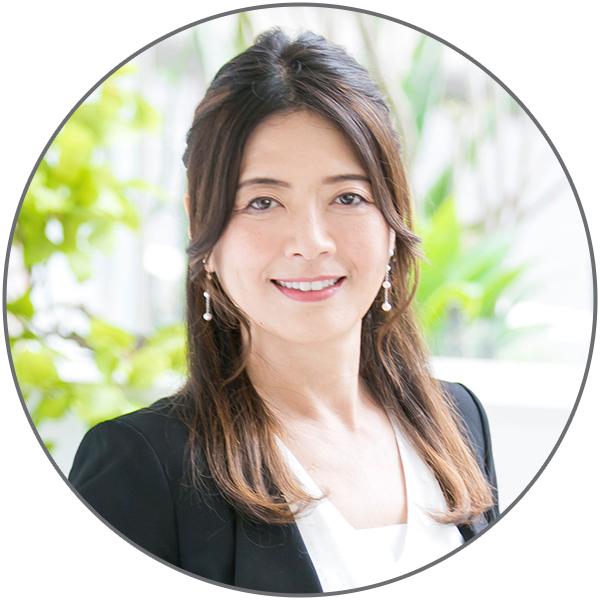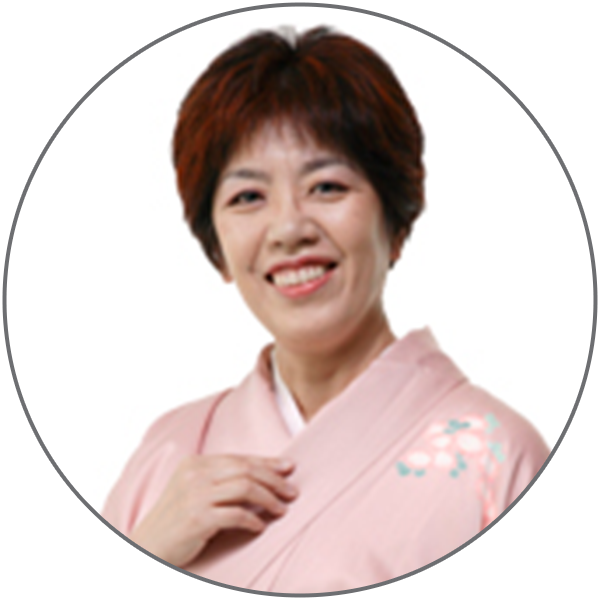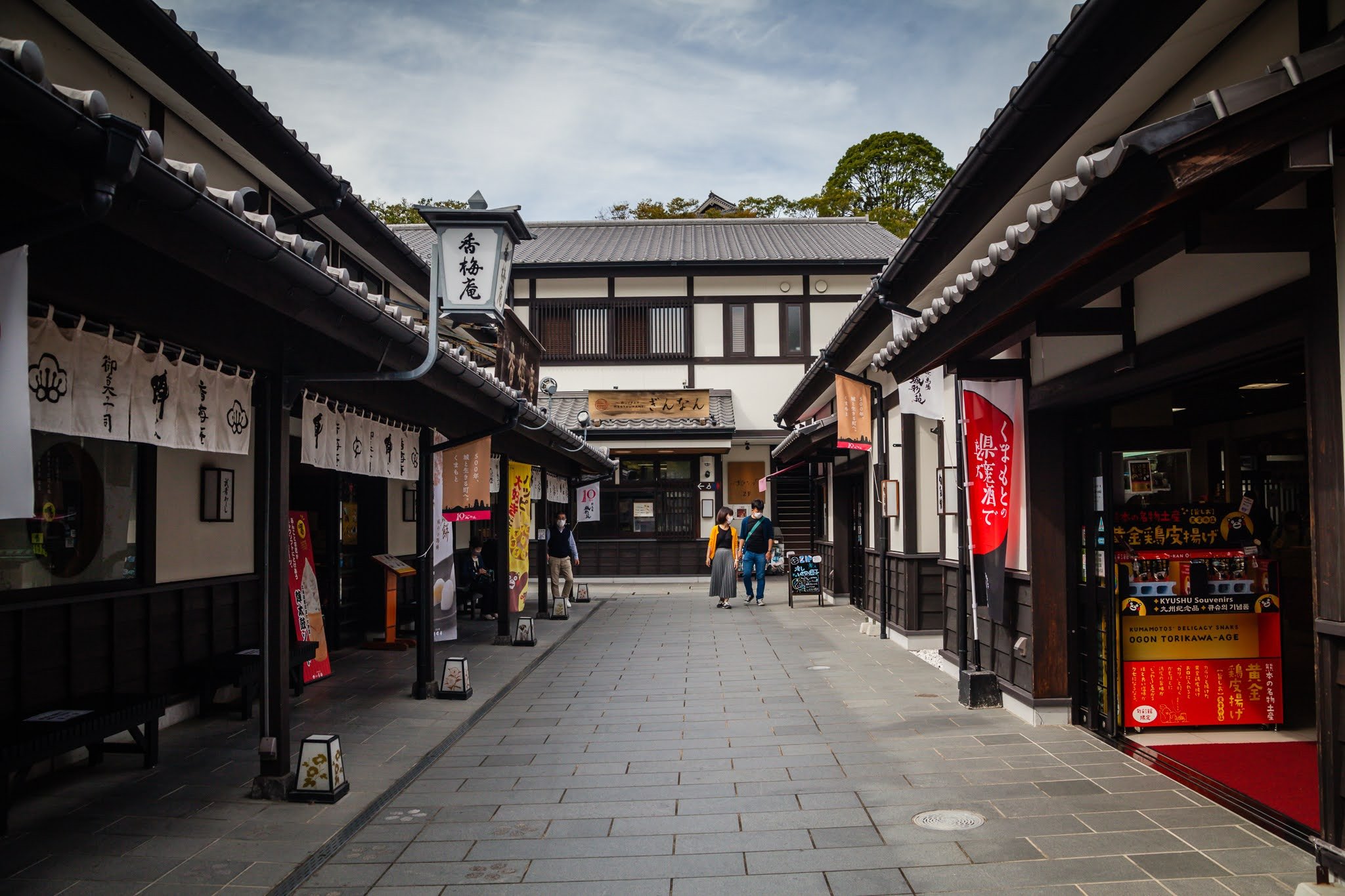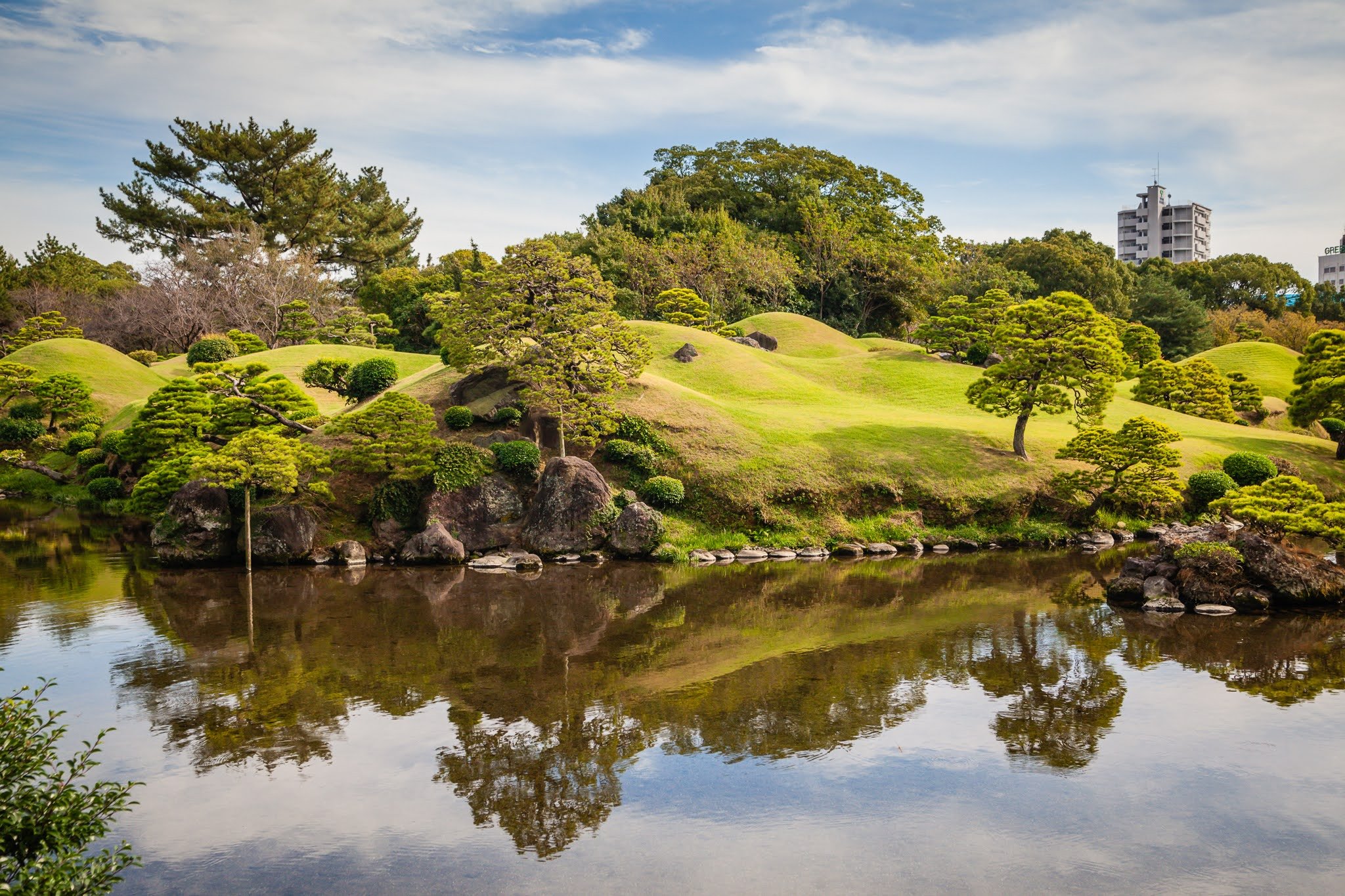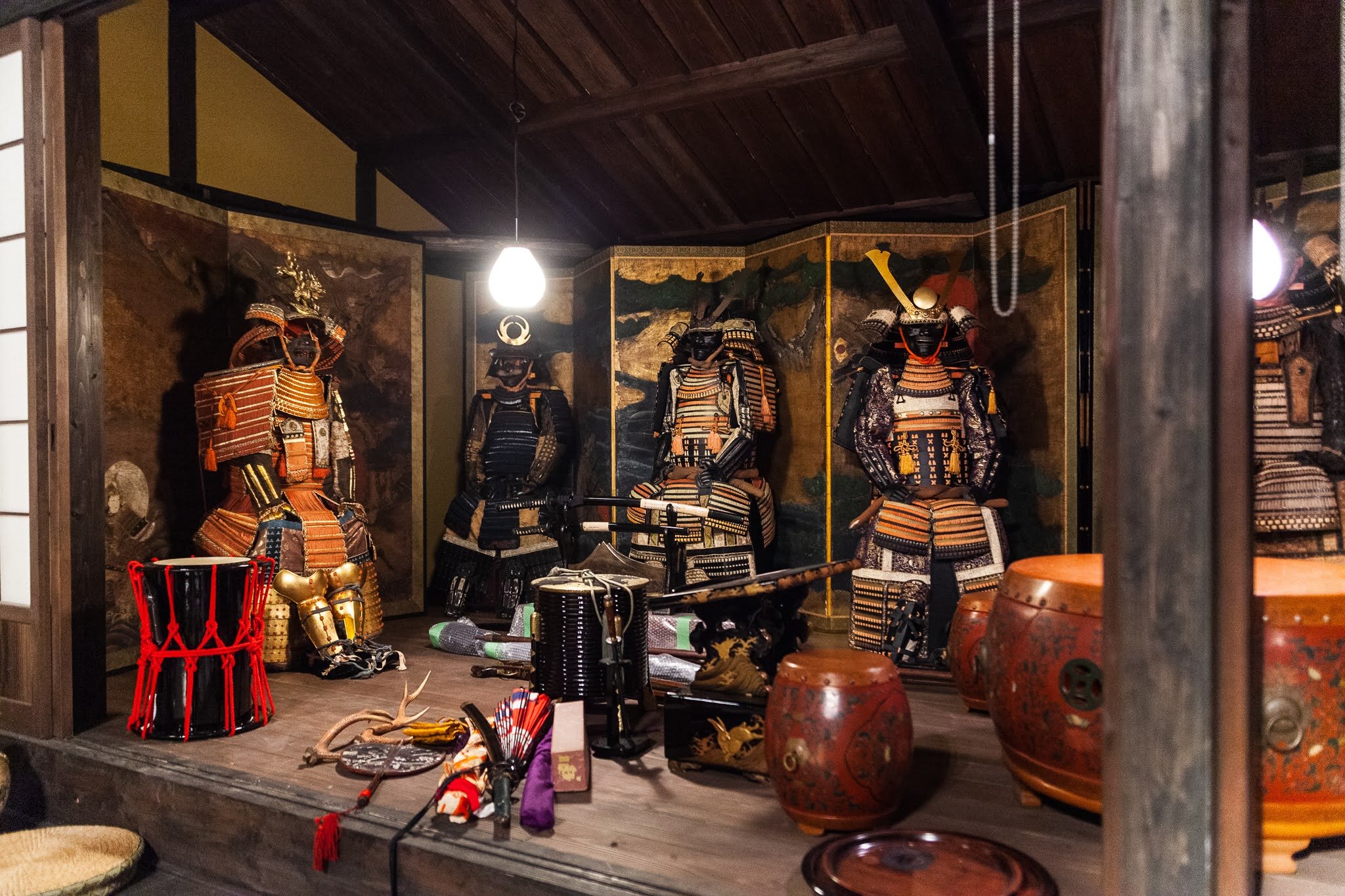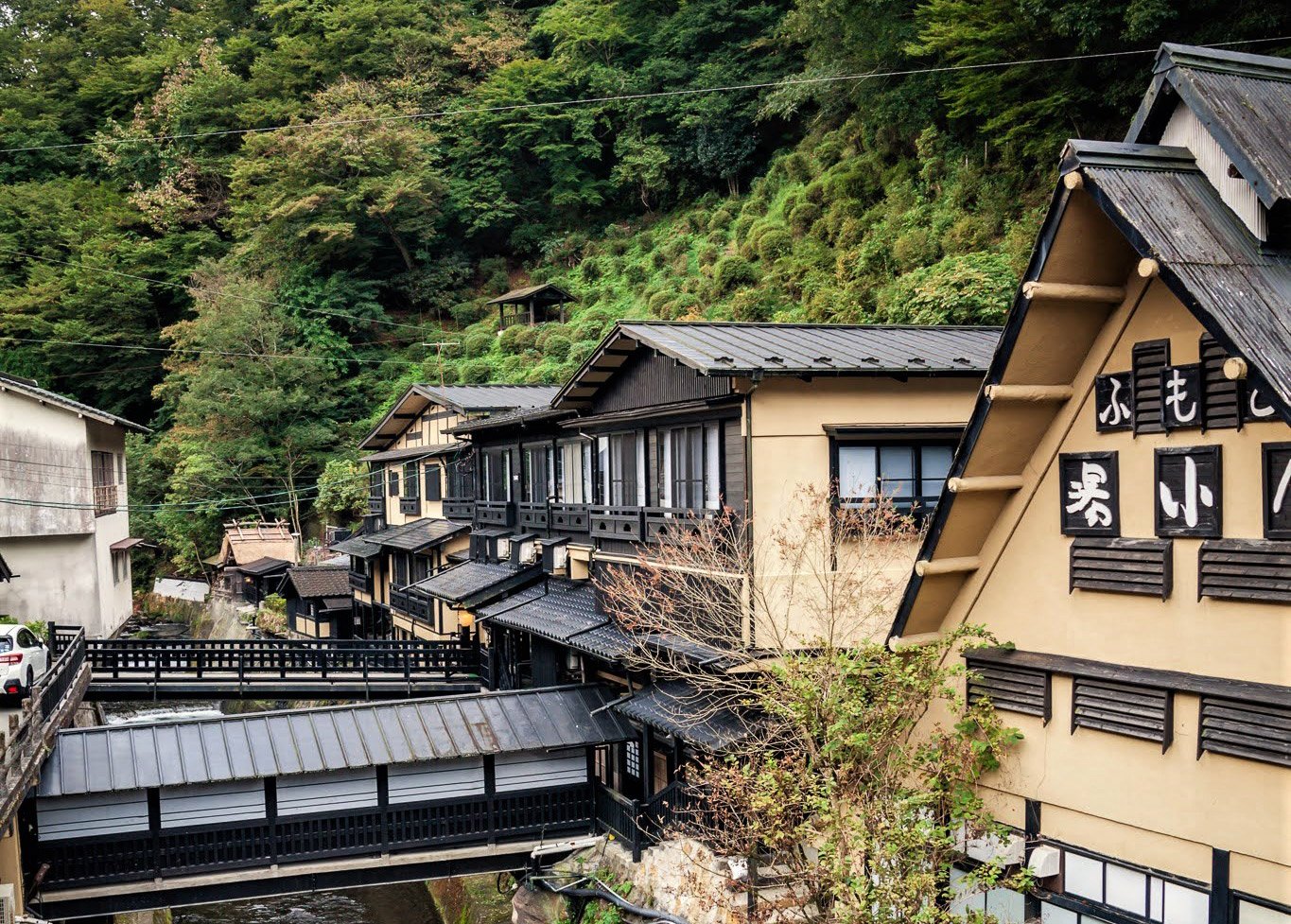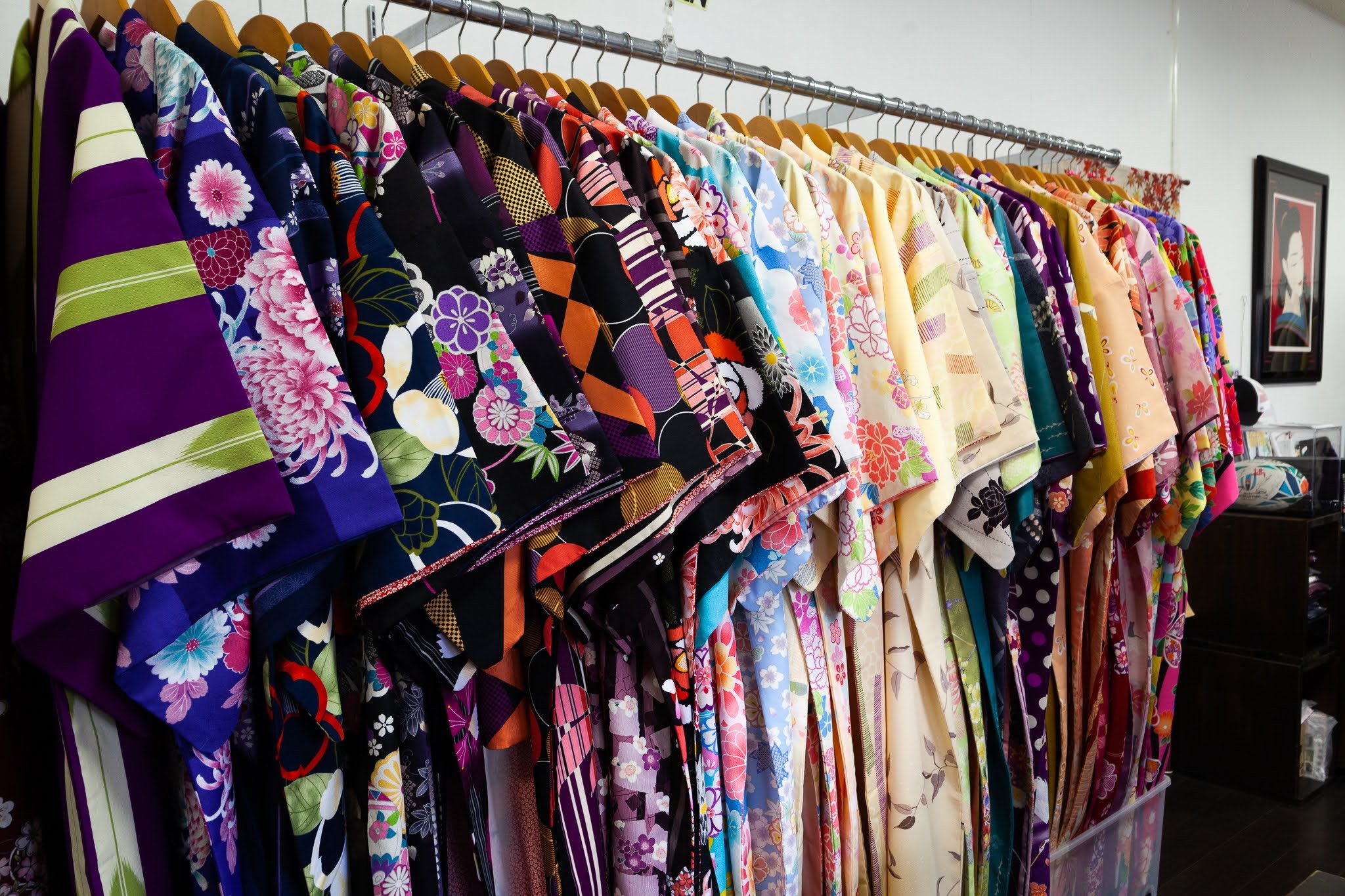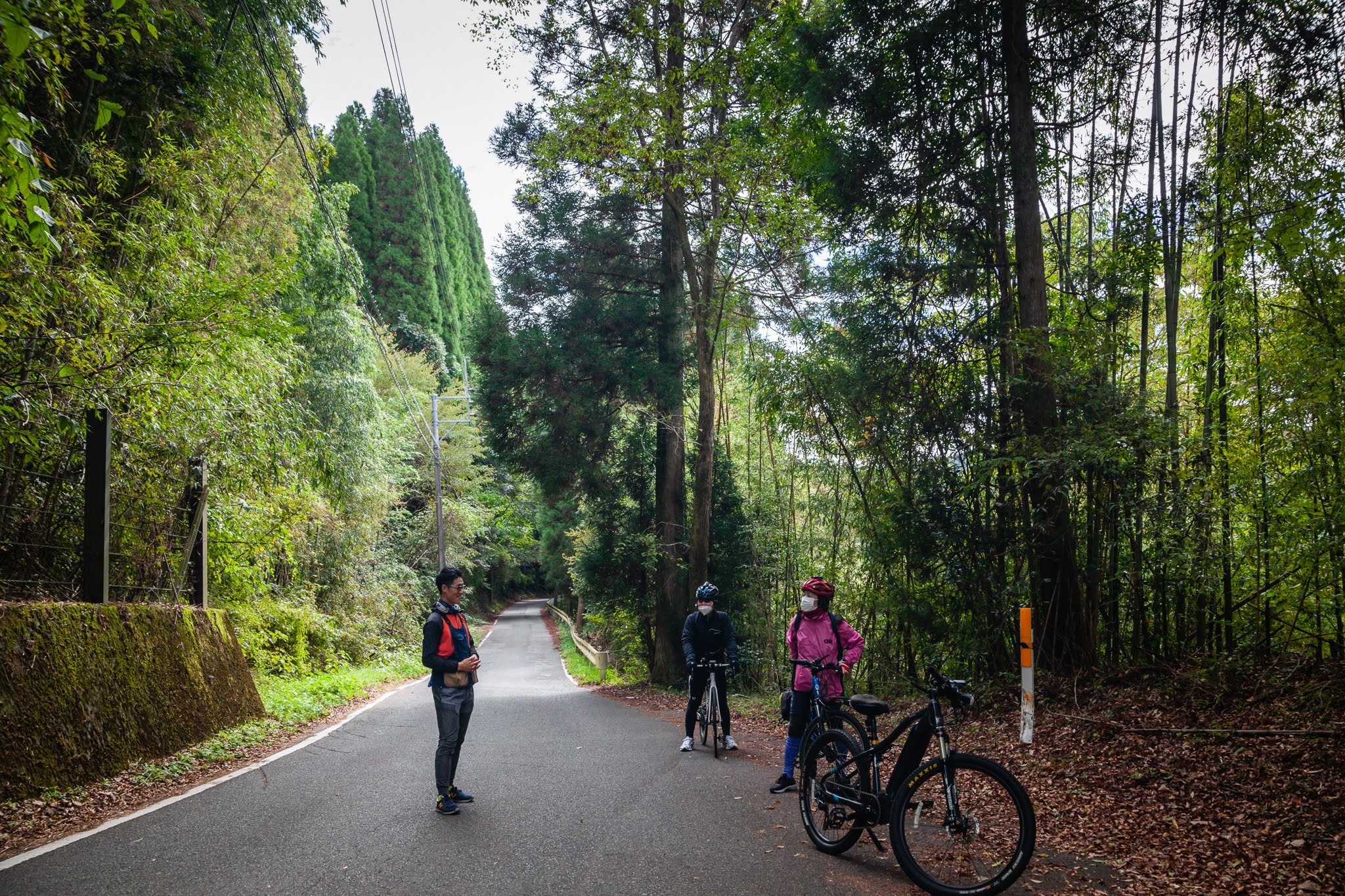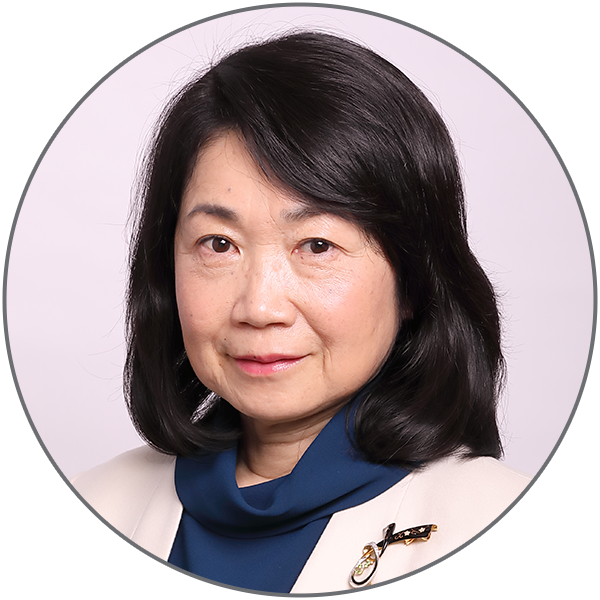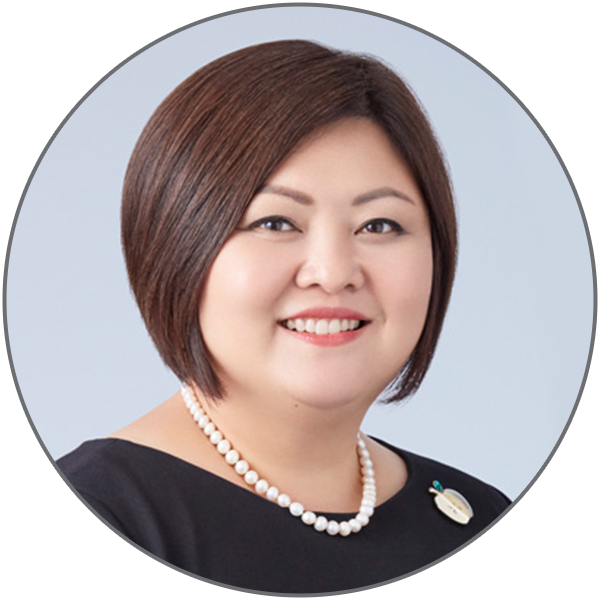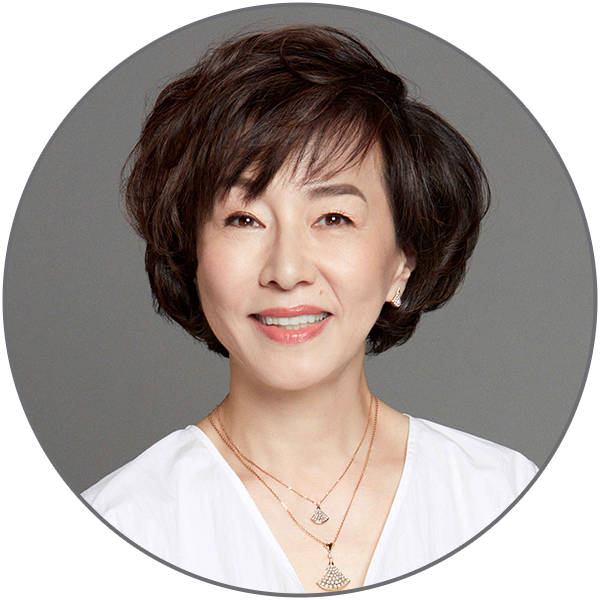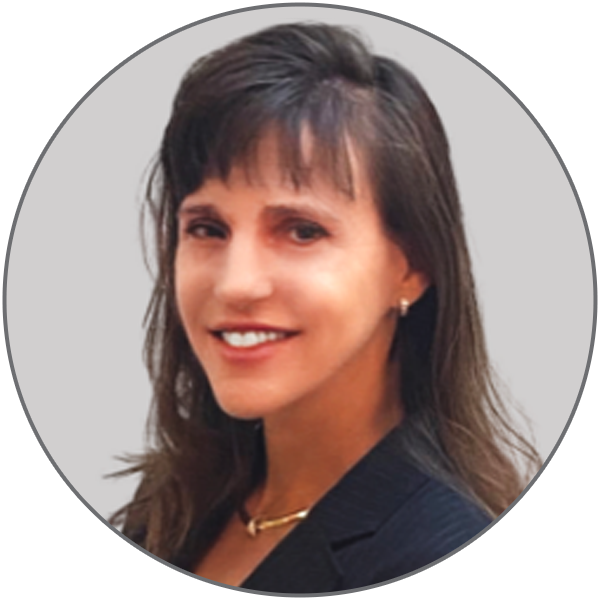Welcome to a New Year
This is an important year ahead of us. Not only do we welcome a new ambassador but, as our new administrations on both sides of the Pacific get to work together, there are new, exciting, and dynamic opportunities for all of us engaged in commerce between this important alliance of the US and Japan.
ACCJ President Om Prakash looks forward to a productive 2022
Click on image to watch the video
Hello, I'm Om Prakash, president of the American Chamber of Commerce in Japan. Happy New Year! You're in the most influential, largest international business community in Japan. You are adding your voice to over 600 companies, 3,000 members, and together we make a difference in possibilities for us in Japan.
This is an important year ahead of us. Not only do we welcome a new ambassador but, as our new administrations on both sides of the Pacific get to work together, there are new, exciting, and dynamic opportunities for all of us engaged in commerce between this important alliance of the US and Japan. We're here at the center of global tectonic changes in economies and security, and it's going to be an exciting year for us.
I'm also looking forward to getting out there and seeing you in person, and having in person events, as soon as it's safe to do so. I'm looking forward to the networking, the friendship, the opportunities that these events bring, and the strength that brings to our community.
I do have one ask of you. Get out there, get involved, join a committee, come out to networking events, get to know people. You're going to see you're going to get out of this as much as you put in—hopefully more. We are very active and have over 60 committees. I encourage you to take part in networking and contributing to our task force, to making friends, to making business connections, and making a difference for all of us.
I'm looking forward to working with you and figuring out how we can take these opportunities and maximize the advantage for all of us in business. I want to thank you for your continued support and commitment. See you soon!
President to President
Jenifer Rogers and Om Prakash share why ACCJ leadership matters
As the world transitions to a third year of the coronavirus pandemic, the American Chamber of Commerce in Japan (ACCJ) undergoes a transition of its own as outgoing President Jenifer Rogers passes the baton to incoming President Om Prakash. A newly elected Board of Governors also takes office for 2022, ready to lead the ACCJ through challenging, but exciting, times for global business in Japan.
Rogers, who is general counsel Asia for Asurion Japan Holdings G.K., and Prakash, chief executive of Northrop Grumman Japan, sat down on the day of the new board induction to talk to The ACCJ Journal about the progress the chamber made in 2021, the possibilities for 2022, and why they both are proud to volunteer their time and leadership.
Prakash: Serving has been my professional life almost in its entirety. I served in the Air Force for over 26 years. I started out mainly as a pilot and a test pilot, but [spent] a lot of time in the Pentagon working on issues for our nation, including industrial policy and working with Congress.
After that, I joined Northrop Grumman, and I’ve been with Northrop Grumman for seven years, three of them here in Japan. I’m super excited to put all that background together and work with all of you and the ACCJ to bring great things for US business, US commerce, and the US–Japan alliance.
Rogers: I’ve been very impressed since I met Om two years ago. I think he has an esprit de corps, and he is such a person with integrity. He reached out to me in the last election to meet up and we’ve had a dialogue over the last two years. I think he is straightforward, a team player, incredibly passionate about improving the US–Japan relationship, and doing the best he can for the chamber. I personally am very excited that he’s been elected to this position.
Prakash: I do absolutely enjoy working with people. I get a lot of energy from hearing other people’s ideas and thinking about it. I’m not afraid to change my mind—so I don’t know if that’ll be sometimes something difficult to work with—but, hopefully, as a group, we’ll all come to good decisions. I like being inclusive and absolutely picking up diverse opinions.
I’m anxious to also get things done. I like to get my hands dirty when necessary, and also see others succeed and be given opportunities. I think the chamber is going to be incredibly fun to work in because, after all, we’re all volunteering our time. We’re putting into it because we believe in something we’re doing. We have passion. Those are interesting things to work with, and around, because we’re not all going to always agree on things. But we’ll certainly be passionate about it, so it’ll be fun.
Rogers: I know from your speech that you have great things to offer. And as the outgoing president, I feel very excited to leave the chamber this year in your very capable hands.
Prakash: Well, thank you. And, also, I can’t thank you enough. I’ve known you for going on two years now, and I was actually really happy you’re the president that I’m coming up behind, because I know you’ve left the chamber in great shape and you’ve done great things with it. I’m truly impressed and thankful for what you’ve done, because you’re certainly going to make it easier for all of us on the next board.
Rogers: Thank you very much. That’s really nice to hear. I feel great that we’ve done a lot of what we set out to do, but I think what’s really nice is that there’s so much more to do. It’ll be exciting to see the chamber continue to succeed under your leadership.
Twenty twenty-one was such an unusual year with the pandemic. We went in thinking we were maybe seeing the end of it. So, we had to really pivot and focus a lot more on pandemic-related advocacy issues: reentry, entry restrictions, vaccines.
What was really nice to see is how our members really communicated their concerns. We rallied to provide vaccine support, get out there into the media, and push the Japanese government to really pursue a more open travel policy and science-based approach to vaccines so we could truly enhance our members’ experience. In a very unique environment—and even though we were virtual—that kind of pandemic situation brought us together.
Also, because of that, I really wanted to leave a legacy around great corporate governance. We established the governance task force, and, really, I wanted to make sure that the chamber was sustainable and a role model in the community. With the constitutional amendments, and a lot of the changes we made within the chamber—including some of the good practices around the induction ceremony today for the Board of Governors—I really feel very proud that we’ve made good strides in being the role model we should be as an organization representing our members in the business community here.
Prakash: I’m just so impressed with all the things that you were able to do in 2021, considering that a really key person—an ambassador, which is so critical for the ACCJ—was absent from the US government side. I’m looking forward to having that person on board quickly in 2022 to really bring new dimensions to what we can do for our members and the US–Japan relationship.
The points you brought up about how none of us expected the pandemic to last this long—how you embraced it and now have made for all our members something that we’re not expecting to ever to go back [from]—it’ll just be continuing evolution of an ongoing situation. I think that’s something that we need to take forward on the new board as One ACCJ, [looking at] all the points that we’ve learned and continuing to learn as the situation evolves.
Rogers: I think we did manage to do some great advocacy around digitalization, sustainability, and even the US–Japan economic partnership in certain ways. But absolutely, I think you’re well positioned with your background. And also, with the new US ambassador and the changes in the government that have taken place under Kishida-san this year as prime minister, I think the chamber is well positioned to make a huge difference. I will be happy to support, but also very excited to see what you’ll be doing in that space next year.
Prakash: Well, all of us will be doing.
Rogers: That’s right.
Resilience, Vision, and Opportunity
As I prepare to pass the baton to Om Prakash as the next president of the American Chamber of Commerce in Japan (ACCJ), I am grateful for what we have all accomplished together this year. He and a newly elected Board of Governors will lead the chamber into 2022 with exciting opportunities for further growth and change.
A challenging year has made the ACCJ stronger than ever
Listen to this story:
As I prepare to pass the baton to Om Prakash as the next president of the American Chamber of Commerce in Japan (ACCJ), I am grateful for what we have all accomplished together this year. He and a newly elected Board of Governors will lead the chamber into 2022 with exciting opportunities for further growth and change.
I am proud that the ACCJ has shown resilience and maintained its status as the preeminent business organization in Japan supporting the foreign business community. It has been an honor and privilege to serve as president, and I look forward to continuing to support the ACCJ in other ways.
Constant Change
The uncertainty that began in 2020 has continued in 2021, and as the pandemic has evolved in unpredictable ways, so has the way in which we work and interact. The political landscape has also shifted, with leadership transitions in the United States and Japan. Change in 2021 has been constant, and the ACCJ has adapted well by becoming a more agile and tech-savvy organization.
As virtual events have become the norm, the ACCJ has embraced this new reality and used it as an opportunity to provide greater accessibility for all members and to increase our digital presence in the broader community. By using social media and bringing The ACCJ Journal in house, we have been able to boost our advocacy efforts. And through our diverse programs, we have reached a broader audience and enhanced our position as the voice of international business in Japan.
This year, we also made changes to the ACCJ constitution that modernize our governance and demonstrate that we are a dynamic and adaptive organization which continues to be a leader in corporate governance best practices.
Transformations
Chamber advocacy on digital transformation could not have been timelier. Our Japan Digital Agenda 2030 report was released just as the importance of technological infrastructure, support, and know-how became central to surviving and thriving as Covid-19 put traditional practices to the test.
And as our members have adapted to the pandemic, we have seen Japan’s overall corporate environment shift as well. Working remotely has been normalized, providing greater workplace flexibility—something the ACCJ has long been advocating.
The ACCJ is providing flexibility in events as well. We have hosted a few hybrid events, which combine the benefits of online and offline gatherings, and are gearing up to offer these more frequently in 2022. Our commitment to providing virtual access to all in-person events remains key to giving members the opportunity to participate in the way that best suits their needs. It also allows members from all chapters and overseas equal access to our programs.
The annual “alphabet battle” featuring (from left) Jesper Koll, William Hall, and Dave McCaughan returned on December 6 as a hybrid event of the kind we plan to host more of in 2022. Also pictured are (from right) moderator Patrick Newell and Special Events Committee Vice-chair Paul Kraft.
Stronger Voice
On the advocacy front, we’ve never been more active nor influential in promoting a positive business environment in Japan. The ACCJ has been one of the most vocal groups regarding border-entry issues and a science-based approach to policy. Together with the European Business Council, we conducted a survey to quantify the impact of border restrictions on our members and businesses in Japan, and we have been a consistent voice in media, advocating for changes to these policies. We have also worked to make our advocacy initiatives more impactful, effective, and efficient by aligning our priorities with four coordination groups:
- US–Japan Partnership
- Health and Retirement
- Sustainable Society
- Digital Society
The latter two were new in 2021 and represent very active areas of focus. For the Digital Society Coordination Group, digital transformation is a highly dynamic topic, and we leveraged the work started last year on the Japan Digital Agenda 2030 report to set up another task force focused on collaborating with the Japanese government to implement the recommendations outlined in the paper.
The Sustainability Coordination Group was created and we realigned the leadership of our Sustainability Committee in response to the pandemic, which increased the urgency surrounding this topic and accelerated the need for the ACCJ to show its strong commitment to being at the forefront on all aspects of sustainability issues.
Advocacy and ACCJ events focused on energy-related aspects of sustainability, social issues, and corporate governance—as well as the importance of diversity and inclusion—brought wider awareness and understanding to these matters.
Looking Ahead
Throughout 2021, the chamber has proven itself to be a responsive and progressive organization, pursuing and prioritizing the key interests of our members in a rapidly changing environment. We met with key US and Japanese government officials in a successful, hybrid-style Diet Doorknock and select in-person meetings with officials such as United States Trade Representative Ambassador Katherine Tai and US Secretary of Commerce Gina Raimundo.
We look forward to the arrival of a new US Ambassador to Japan in 2022 and, hopefully, more opportunities for in-person interaction with the US and Japanese governments.
Whatever the future holds, we can be sure that the ACCJ will continue to be impactful in its advocacy activities.
I want to thank this year’s ACCJ Chair, Eriko Asai, Special Advisor Christopher LeFleur, the Board of Governors, Executive Director Laura Younger and staff, as well as ACCJ leaders and members for their support, assistance, and energy throughout a very unusual year. It’s been challenging but, in some ways, I feel the need for distance has brought us all closer. I look forward to seeing what the ACCJ is capable of under next year’s leadership and congratulate Om and all the new leaders.
A Transformation of Our Own
Transitions have been a way of life over the past two years. The coronavirus pandemic has forced companies to rethink how they operate, how they manage staff and workflows, and how they communicate. The winds of change have also rustled through the pages of The ACCJ Journal. Since bringing the magazine in house at the start of this year, we’ve made some adjustments and additions that have allowed us to better meet the needs of chamber members and communications. This has been a prelude to a bigger shift.
The ACCJ Journal expands from print to become a digital platform in 2022
Listen to this story:
Transitions have been a way of life over the past two years. The coronavirus pandemic has forced companies to rethink how they operate, how they manage staff and workflows, and how they communicate. The ways in which we share information have also been evolving thanks to the internet, social media, and shifting consumption preferences. This, of course, began before Covid-19 forced an acceleration in digital transformation, but the crisis has made things that had been optional a necessity.
From my perspective, this evolution in workstyle and communication has been most welcome. That’s because, for me, it is old hat. I spent 2006–15 working entirely remotely. I embraced cloud-based workflows and project management tools in 2006 as well. And I began podcasting in 2010, launching a podcast network that involved hosts and content production spread across many countries. I was ahead of the curve, and I’ve been waiting a long time for what I consider normal to become so for everyone.
Finally, though the catalyst is an unfortunate one, we are here.
Turn the Page
The winds of change have also rustled through the pages of The ACCJ Journal. Since bringing the magazine in house at the start of this year, we’ve made some adjustments and additions that have allowed us to better meet the needs of chamber members and communications. This has been a prelude to a bigger shift.
As we head into 2022, The ACCJ Journal will undergo a transformation of its own as it moves beyond being simply a print magazine to become a digital platform. While we will continue to produce periodic print editions with focused themes, our primary medium will be digital.
“Providing adequate and timely coverage can sometimes be difficult when tied to a cyclical print schedule. Through The ACCJ Journal digital platform, we’ll be able to react at the right time and share the messages and views of the chamber more effectively.”
This will benefit the ACCJ and members in many ways. Perhaps the biggest benefit is flexibility. The pace of activities, discussion, advocacy, and business quickens all the time. Providing adequate and timely coverage can sometimes be difficult when tied to a cyclical print schedule. Through The ACCJ Journal digital platform, we’ll be able to react at the right time and share the messages and views of the chamber more effectively.
We’ll also be bringing stories to life in ways not possible on the printed page. This year, we added audio to The ACCJ Journal with narrated versions of stories available for streaming on our website and as a podcast. In 2022, we’ll be expanding this with more audio-first content and video which supports ACCJ advocacy and global business in Japan. And where the written word is concerned, a wider range of options will help us provide leaders with the best tools for achieving their goals.
Next Chapter
It’s an exciting time to be a publisher, and I’m looking forward to bringing many approaches that I have long used for other publications to The ACCJ Journal. But make no mistake: as the magazine spreads its wings beyond print, it carries with it a 58-year history of supporting the chamber. And it’s that history on which we will build a publication that’s fully at home in this age of digital transformation.
I’d like to close out the year by thanking you for supporting The ACCJ Journal—especially those who so generously give their time to share expertise and insights with our writers and readers. Although there will be fewer print editions of The ACCJ Journal, I know that this latest evolution of the publication will bring even greater access to the incredible knowledge of our members and the broader business community.
Supplier D&I
While there is much talk in Japan about diversity and inclusion (D&I) in the workplace, another important, though less-discussed, aspect of D&I involves suppliers. Some major companies have long championed diversity in their supply chains, but the issue is now getting more attention—and progress is being made—thanks to the efforts of socially conscious leaders. This was the topic of a November 25 virtual event, hosted by the ACCJ-Chubu Programs Committee and entitled Supplier D&I: Three-Year Journey in the Japanese Market.
WEConnect International’s three-year journey in the Japanese market
Listen to this story:
While there is much talk in Japan about diversity and inclusion (D&I) in the workplace, another important, though less-discussed, aspect of D&I involves suppliers. Some major companies have long championed diversity in their supply chains, but the issue is now getting more attention—and progress is being made—thanks to the efforts of socially conscious leaders.
This was the topic of a November 25 virtual event, hosted by the ACCJ-Chubu Programs Committee and entitled Supplier D&I: Three-Year Journey in the Japanese Market. Speaker Setsu Suzuki, chief executive officer and founder of Hunext, Inc., shared how sourcing from women-owned startups is shaping the Japanese economy.
Connecting Women
Suzuki is the Japan project director for WEConnect International, the Washington, DC-based non-profit organization (NPO) that expanded its certification and market access activities to Japan in 2018. She recalled how, in 2017, she was invited by Gary Schaefer, principal officer at the US Consulate Nagoya, to attend the Global Entrepreneurship Summit in Hyderabad, India. Some 6,000 women business owners took part in the three-day event. There she had her first contact with WEConnect International, which helps drive money into the hands of women business owners by enabling them to compete in the global marketplace.
“That’s fantastic, right?” Suzuki exclaimed. “So, I immediately said that I want to be a member of this organization.” After getting to know leaders of the enterprise during the summit, she was asked to become the director of WEConnect in Japan. Three months later, she signed a contract with the international body and led its expansion into the market. Noting that WEConnect International is the only certifying body in the world that supports supplier diversity, Suzuki explained that there are five categories:
- Women
- Challenged
- LGBTQ
- Racial minority
- Veterans
“And women are really key,” she said. Globally, just one percent of procurement by governments and corporations goes to women-owned business.
“WEConnect International began studying this 12 years ago, but the number is still only one percent. We want to push it to two percent,” she explained.
“According to a World Bank report, 32–39 percent of companies around the world are owned by women. So, definitely, women are key to a diverse economy.”
Next, Suzuki introduced the companies among WEConnect International’s 143 member buyers that are most active in Japan:
- Accenture
- Johnson & Johnson
- Intel K.K.
- IBM Japan, Ltd.
- EY
- P&G Japan G.K.
- Microsoft Japan, Co., Ltd.
- Micron Memory Japan, G.K.
“More and more Japanese corporations are starting to pay attention to supplier diversity,” she said.
Where Are the Women?
There are 3.8 million small businesses in Japan, but only 500,000 are owned by women. What constitutes a woman-owned business (WOB)? It seems straightforward, and Suzuki noted that we use the term a lot in English.
But to make it clear what this means by definition, she explained that it should be “an incorporated company with at least 51 percent of the business owned and managed, or governed, by one woman—or more.” The WEConnect certification standards state that ownership “is determined based on title to, and beneficial ownership of, stock, membership interests, or other equity in the business.”
WEConnect allows self-declaration as a WOB. Such registration in their database is free and carries limited benefits.
“WEConnect International … helps drive money into the hands of women business owners by enabling them to compete in the global marketplace.”
There is also the Women Business Enterprise (WBE) designation (pronounced “weebee”). This certification opens the door to the procurement departments of 143 member companies and enables business owners to connect with 12,000 women entrepreneurs in more than 110 countries.
In this case, there is a fee, and membership includes unlimited access to WEConnect benefits. The money is used to fund the NPO’s operations, which are driven by three pillars: certification, connection, and education.
Three-Year Journey
WEConnect International’s launch in Japan took place three months after Suzuki took on her role as country director. The expansion into Japan was made possible through the Strengthening Market Access for Women Business Owners initiative, a consortium that includes Accenture, Intel, and Johnson & Johnson. The founding members are working closely with WEConnect to leverage its powerful global networks and experience working with women business owners, and there are now 28 certified WBEs in Japan.
The launch was marked by a hybrid event, making it possible to connect women business owners from Hokkaido to Okinawa. It was supported by the American Chamber of Commerce in Japan, and Women in Business Committee Vice-chair Makiko Tachimori (Fukui) helped facilitate.
A business-to-business matchmaking event was held on November 26, 2020, in which 10 member buyers, 14 tier-one corporations, and 51 WOBs and WBEs participated. Suzuki said that three women business owners got contracts following the event, showing how even online meetings can really make business happen.
The session will take place again in February—rebranded as the P&G Academy Women’s Entrepreneurs Business Development Program—as an eight-day intensive series.
With the support of Johnson & Johnson and Dell Technologies, WEConnect conducted a survey of 191 Japanese female entrepreneurs in Japan between August and September 2020. According to results, the top challenges faced by WOBs are:
- Balancing work and family (65 percent)
- Gender discrimination (30 percent)
- Market entry (11 percent)
She also noted that many women who responded to the survey cited the issue of surnames as an obstacle to their business lives. Because Japan continues to require that women take their husband’s surname, some women said that they must use a false name in work, so that their husband’s family will not discover that they are entrepreneurs—a role that goes against traditional views of a woman’s place in society.
On the brighter side, Suzuki said that WOBs in Japan are thriving across a wide range of industries. Many fall under the United Nations (UN) Sustainable Development Goals (SDGs), which are an important part of WEConnect International’s activities. The organization is working with governments, the UN, and others to help achieve SDG number five: gender equality in the economy.
Japan WBEs
There are only 28 certified WBEs in Japan, but Suzuki is dedicated to expanding that number. She introduced two success stories during the event, starting with Yuko Takahashi, president of Osaka-based Japan Engine Valve Mfg. Co., Ltd. Known by the brand name Dokuro, the company began producing engine valves in 1949.
Takahashi, who was unable to attend due to a business event, delivered a short, vibrant video in which she flew a drone around the Dokuro offices and production facilities to explain how her company makes after-market auto parts. The parts are shipped around the world to meet the needs of those who own Japanese cars.
Next, Ayako Mochizuki, a Japan native who moved to the United States at the age of 22, shared her experiences running a small and medium-sized enterprise in Japan, doing business with large companies on a global basis.
In 2014, she became president of IBS Japan Co., Ltd., the 35-year-old value-added reseller of data communication products, founded by her father. She runs the company from her home in Boulder, Colorado, while her father remains involved as an owner in Ebina, Kanagawa Prefecture, where the corporate headquarters is located.
IBS Japan’s mission is to make life easier through the application of technology, and the company was certified as a WBE by WEConnect International in 2019. “Since then, I have had many successes [as a result of] being a WBE,” she said. One such success, she noted, involved the sale of thermal camera technology to a major pharma company soon after the start of the coronavirus pandemic.
Despite these successes, challenges remain—particularly with traditional mindsets about gender roles in business. Mochizuki shared an interesting example from within her own company.
“When I got certified [as a WBE] in 2019, one of my employees—a key person for me—actually told me that I should not be certified,” she recounted. “He said that if we are certified, if they find out that I’m a feminist—that’s the word he used—we are not going to get business, because it’s a male-dominated industry that we serve. He was very concerned.”
She noted that this worry is real in Japan, because the country remains very much dominated by men, and many of the business leaders are aged 60 and over.
So, the shift in mindset takes time. But through the efforts of Suzuki, WEConnect, and women business owners such as Takahashi and Mochizuki, that change is taking place.
The Case of the Missing Startups
University and government venture funds play a much larger role in Japan than they do in Western countries. Yet we see fewer biotechnology startups here compared with, say, the United States, which is home to eight of the top 10 highest-funded ventures. Why?
Why biotechs find it hard to get going in Japan
Listen to this story:
University and government venture funds play a much larger role in Japan than they do in Western countries. Yet we see fewer biotechnology startups here compared with, say, the United States, which is home to eight of the top 10 highest-funded ventures. Why?
I explored this with Dr. Hiroaki Suga, co-founder of biotech company PeptiDream Inc., in a recent episode of my podcast Disrupting Japan. A professor at the University of Tokyo, Suga did his post-doctoral study under Nobel Prize-winning biologist Jack Szostak at Harvard Medical School. As an academic and a researcher, Suga knows well the dynamics at play in biotech development and application in Japan.
With PeptiDream, which has created a platform for the discovery of highly diverse, non-standard peptide libraries that can be developed into peptide-based therapeutics, Suga has taken a different approach to funding. And it has paid off.
Founded in 2006, PeptiDream is now worth more than $3 billion and collaborates with many of the world’s largest pharmaceutical companies, including American Chamber of Commerce in Japan (ACCJ) members Eli Lilly Japan K.K., Bayer Yakuhin, Ltd., AstraZeneca K.K., and Novartis.
Less is More
What I learned from our discussion is that, in this situation, smaller investments may lead to better results.
“If you have $10 million, you will just burn through it,” Suga said, adding that less capital will keep you focused and get results that can lead to bigger things.
In PeptiDream’s seed round, it received $1 million from The University of Tokyo Edge Capital Partners Co., Ltd., a Japan-based seed- and early-stage deep-tech venture capital firm.
With limited funds, “You need to really develop technology that will allow you to collaborate with big pharmaceutical companies,” Suga explained. These companies set criteria, and don’t give you money immediately. “Once you reach [one set of] criteria, you can get money. Then you get to another stage and you get more money,” he said.
This approach carries less risk for pharmaceutical companies, and Suga sees little risk for PeptiDream, because he is confident that they can meet the criteria.
Obstacles
This unusual approach has worked well for PeptiDream, so why don’t we see more biotech startups succeeding this way in Japan?
Suga said there are several reasons.
“Venture capitalists are not investing in risky companies, and biopharmaceutical companies are high risk,” he explained. “If you are developing business software, after six months, you know if it isn’t working. But drug development is a long-term commitment.”
“The first is that venture capitalists are not investing in risky companies, and biopharmaceutical companies are high risk,” he explained. “If you are developing business software, after six months, you know if it isn’t working. But drug development is a long-term commitment. Venture capitalists have to wait, and they may not be able to do so. They may need to wait 10 years to realize the potential, but they are looking for five.”
“The second reason is that Japanese society prefers to go with what’s known,” he continued. In this case, it means that talent heads for the largest pharmaceutical companies, which are seen as stronger and a safe harbor. “For example, all my students go to big pharma. They don’t go to PeptiDream.”
But this isn’t so much a case of risk aversion—often cited as an obstacle to success in Japan—as one of familiarity. Their parents know the names of the big players, but not of small ones such as PeptiDream.
Large Japanese companies tend to have little interest in helping smaller ones. This chasm is one that the ACCJ is attempting to bridge with its Healthcare x Digital initiative, which completed its second annual competition in November.
Spin-off vs. Startup
The third obstacle that Suga cited is the fact that many startups in Japan are research units that have been spun off from large companies that chose to leave Japan. “They had a very good team here, so they decided to spin off. They already have a background from big pharma and continue doing [what they were doing],” he explained. “That means that they aren’t hugely different from the big companies.”
In the end, Suga said that the biggest change that needs to take place for Japan to become more fertile ground for biotech startups must be made at the university level.
“Professors really need to work hard to get technology to be very practical, to be very robust. You really have to put forth effort to get to the end,” he said. “Then, the Japanese government needs to support this type of research. That’s very critical.”
D&I Hiring in Healthcare
It has been two decades since the Japanese government set its target of having women in 30 percent of management positions by 2020. The country has fallen far short of that goal, which the government has pushed off to 2030. Titan Consulting K.K. Business Development Manager Sophia Plessier certainly noticed the imbalance on her arrival in Japan. Coming from San Francisco, where discussion of diversity and inclusion (D&I) and support for women in business are a part of everyday life, she found it striking how few Japanese companies were promoting these important issues.
Titan Consulting helps companies put diversity policies into action
Listen to this story:
It has been two decades since the Japanese government set its target of having women in 30 percent of management positions by 2020. The country has fallen far short of that goal, which the government has pushed off to 2030.
Titan Consulting K.K. Business Development Manager Sophia Plessier certainly noticed the imbalance on her arrival in Japan. Coming from San Francisco, where discussion of diversity and inclusion (D&I) and support for women in business are a part of everyday life, she found it striking how few Japanese companies were promoting these important issues.
At Titan, she helps clients increase the diversity of their leadership. It’s a natural progression of her career in executive recruitment for the pharmaceutical, biotechnology, medical devices, and technology industries. She began that journey in 2015 in the United States, where she partnered with top healthcare companies to fill key spots in their management.
Focus on Diversity
Filling those positions is about more than just reaching a percentage. It’s about benefiting society through the innovation and solutions that emerge from teams built on diverse views, experiences, and backgrounds. And Titan’s area of focus—healthcare and life science—requires a little extra attention.
As Business Operations Manager Sean Lindley noted: “The benefits of having a more diverse leadership team are well established, but building that team can be more of a challenge in healthcare—especially in Japan—due to the somewhat conservative nature of the industry.” The way in which these companies approach screening adds an extra layer that must be overcome, he explained, “but with this challenge come opportunities, and if you’ve got something which can potentially remedy that, then the most conservative industry is probably where you want to try and apply the solution.”
The solution he speaks of is the D&I Spotlight Package, which Titan has created, inspired by another product they offer to clients which focuses on medical-doctor hiring. The package helps clients who wish to start putting their D&I policies into action through talent acquisition do so in the most effective way possible.
“Titan takes the time to understand the areas on which the client is aiming to focus their D&I hiring and the foreseeable challenges.”
The D&I Spotlight Package is a 12-month commitment from Titan Consulting which starts with an in-depth discussion to understand the client’s current situation and business needs. Titan takes the time to understand the areas on which the client is aiming to focus their D&I hiring and the foreseeable challenges. This offers a close partnership in which Titan provides detailed market analysis, access to an extensive network of professionals, a market map that identifies candidates, and ongoing, proactive support. Whether the client just wants a market map, needs to hire for key positions, or has extensive hiring needs, Titan is ready with a tailored service.
“We work with the client to pinpoint what type of professionals they want to engage with,” explained Partner Daniel McGrath. “Some clients have urgent and immediate needs while others are more focused on casual exploratory meetings for pipelining. Whatever their situation, Titan offers the opportunity to turn D&I hiring ambitions into reality for companies that are serious about evolving their business.”
Real World Results
Plessier shared an example of a successful placement. In another case, a medical device client, which was focused on Japan and had an entirely male executive team, was given a big incentive from the global executives to push for more diversity. They needed to replace their head of research and development, so decided to invest in diversity hiring and work with Titan. In just six weeks, the final candidate was selected from three finalists.
If you’re ready to strengthen your management team with more female leaders and greater diversity of voices and ideas, Titan Consulting is ready to help.
Learn more about the D&I Spotlight Package:
titanconsulting.jp/diversity
Explore Kumamoto
The southern island of Kyushu is famous for hot springs, active volcanoes, breathtaking nature filled with lush greenery, and a relaxing lifestyle that is a refreshing escape from the hustle and bustle of Tokyo. If you are looking for a domestic getaway that will delight the whole family, you can’t go wrong in Kumamoto, the island’s third largest city. Here are 12 must-visit locations in the city and around the prefecture.
Nature and culture await on the island of Kyushu
The southern island of Kyushu is famous for hot springs, active volcanoes, breathtaking nature filled with lush greenery, and a relaxing lifestyle that is a refreshing escape from the hustle and bustle of Tokyo. If you are looking for a domestic getaway that will delight the whole family, you can’t go wrong in Kumamoto, the island’s third largest city. Here are 12 must-visit locations in the city and around the prefecture.
Kumamoto Castle
One of the three most famous castles in Japan, Kumamoto Castle was built in 1607 by the daimyo Kato Kiyomasa (1562–1611). It was one of the main stages of the Satsuma Rebellion in 1877, during which it was partially burned. The castle was designated an Important Cultural Property in 1933 and the main keep, along with several walls and towers, was rebuilt in 1960. The grounds, which are home to the Kumamoto Museum and Kumamoto Prefectural Art Museum, are particularly beautiful during cherry blossom season (late March). The castle tower was damaged during the series of earthquakes that struck Kumamoto in 2016, but reconstruction has progressed and you can once again enter. https://castle.kumamoto-guide.jp/en/
Josaien
A small shopping center modeled after the alleys of an Edo-Period castle town, Josaien in located right next to Kumamoto Castle. It’s a great spot for exploring the culinary delights of the region and picking up souvenirs. It is also home to Yamami Chaya, a restaurant specializing in horse meat. https://josaien-shops.jp
Suizenji Jojuen Garden
A Momoyama-style tsukiyama (circular) garden, Suizenji Jojuen was built in its current form in 1671 by the feudal lord Tadatoshi Hosokawa (1586–1641). The main feature of the 640,000-square-meter grounds is the Izumi Shrine. The garden was officially designated a National Scenic Spot and a National Historic Site in 1929. www.suizenji.or.jp
Higo Zogan
Specializing in Higo zogan, a traditional craft of the prefecture, Mitsusuke is a workshop established in 1874 that prides itself in continuing the 400-year-old art form and evolving it with the times. The workshop’s pieces have been commissioned by the Imperial Household as well as by the prefectural government. Here you can learn to craft a small piece with designs that include the famous Kumamoto Castle or the beloved local character Kumamon. https://mitsusuke.com
Meihodo
This 60,000-square-meter facility surrounded by nature was designed to resemble a traditional samurai villa. Built in 1997 as a private martial arts training facility, it gradually expanded its activities to a broad range of learning experiences focused on traditional Japanese arts and crafts. http://meihodojp.com
Fumoto Ryokan
Founded in 1955, Fumoto Ryokan is a gorgeous traditional Japanese inn located at the heart of Kurokawa Onsen. Open-air and guest-only hot springs, as well as traditional Japanese-style rooms with tatami and futon, provide a simple, cozy, and relaxing experience. www.fumotoryokan.com/en/index.html
Aso Volcano Museum
Established in 1982, Aso Volcano Museum helps visitors better understand Japan’s largest active volcano. The second and third floors feature an exhibition about volcanoes, local wildlife, and a 17-minute documentary on the history of Mount Aso. There’s also an observation deck. www.asomuse.jp/facility/
Kokindenju no Ma
A beautiful tea house inside Suizenji Jojuen Garden, Kokindenju no Ma was built inside the Kyoto Imperial Palace during the Edo Period and moved to its current location in 1912. Enjoy matcha with sweets while sitting on tatami and contemplating the tsukiyama landscape. www.kobai.jp/kokin/
Kurokawa Onsen
North of Mount Aso, this beautiful onsen village with a history spanning more than 300 years boasts some 30 outdoor onsen (hot spring) ryokan. Wooden architecture dominates the landscape in this small valley, transporting visitors to olden days surrounded by nature’s beauty. www.kurokawaonsen.or.jp/eng_new/
Kimono Experience
If you’d like to try a traditional Japanese kimono—or the more casual yukata, which is popular in summer—drop by Wa Collection Mito, a shop founded in 1967 and located next to Suizenji Jojuen Garden. With a selection numbering over 200, they have designs that appeal to everyone. https://wa-collection.jp
Mount Kishima Trekking
One of five peaks in the Mount Aso area, Mount Kishima offers trekking with an elevation difference of about 200 meters. It takes about two hours to traverse the trekking course, starting at the Aso Volcano Museum. From the top of the mountain, you can enjoy great views. www.aso-geopark.jp/kyoukai/event/events.shtml?no=9
Aso Kuju Cycle Tour
An excellent option for exploring the breathtaking landscapes and highlights of the countryside area surrounding Aso-Kuju National Park, Aso Kuju Cycle Tour offers many family-friendly options as well as those designed for different fitness levels. http://aso-cycletour.com
Iiyama Winter Wonderland
Nagano is well known as a destination for winter fun, thanks to its role as host of the 1998 Winter Olympics. As a result of that global prominence, a high number of visitors chart course for the beautiful, snowy landscape where those Winter Games were held. The area is home to many excellent ski resorts, such as Nozawa Onsen and Ikurao Kogen—conveniently located near Iiyama Station—where you can enjoy powder just two hours from Tokyo.
Enjoy a family vacation or workcation off the beaten path
Nagano is well known as a destination for winter fun, thanks to its role as host of the 1998 Winter Olympics. As a result of that global prominence, a high number of visitors chart course for the beautiful, snowy landscape where those Winter Games were held. The area is home to many excellent ski resorts, such as Nozawa Onsen and Ikurao Kogen—conveniently located near Iiyama Station—where you can enjoy powder just two hours from Tokyo.
Madarao Mountain Resort
Snowy fun for the whole family awaits at the largest of Iiyama’s resorts. At an altitude of 1,350 meters—just shy of the 1,382-meter peak of Mount Madarao—this resort boasts 29 courses accessible via 16 lifts. The Madarao Mountain Hotel, with its Japanese and Western-style accommodations, is a great base from which to venture into the snow. Ski lessons with English-speaking instructors, backcountry tours, and a play area with a wide sledding run where can frolic in the snow kids provide something for all skill levels. And for those looking to escape the city but still get remote work done in a relaxing and inspiring atmosphere, the Madarao Mountain Resort is a great choice for a workcation.
Togari Onsen Snow Resort
Nestled in the Sekita mountain range bordering Nagano and Niigata Prefectures, Togari Onsen Snow Resort is smaller and has fewer runs but offers something unique: Japan’s only snowbike park. If plunging down the slopes on a fat-tired mountain bike sounds like just the sort of exhilarating experience you need after so many months at home, this is the destination for you. Three distinct slopes, reserved exclusively for cyclists, offer options for riders of all abilities. There’s a simple slalom skills course with limited moguls, a technical course with narrow trails and groves, and an 800-meter downhill slope. For kids, there is also Snow Strider Park, where those not ready for a snowbike can ride a strider, a bicycle without pedals designed for children.
Nabekura Kogen Heights Mori-no-Ie
Away from the slopes you’ll find another enchanting experience on the Madarao Plateau, in Iiyama City. A collection of cottages nestled in the beautiful beech forest are available for rent and can accommodate groups of five to seven. With fully equipped kitchens, wood-burning stoves or space heaters, and Japanese and Western-style lodging, these cottages are ideal for a tranquil and safe getaway that puts you back in touch with nature. Snowshoe through the beautiful forest and along streams, or take a night hike in the snow and enjoy the moonlight and starry skies. Numerous pensions can also be found around Madarao. With private rooms and shared dining and bath facilities, most are family run and offer great hospitality and home-cooked meals.
Iiyama Kamakura Village
Another ethereal experience to be had is evening dining in a kamakura, a traditional domed hut made of snow. Each winter, from late January to late February, 20 of these huts are built to form the makeshift Iiyama Kamakura Village. Originally a place to worship the gods, the kamakura is today used as a place to savor nabe (hot pot), a Japanese dish of local vegetables, mushrooms, and pork that will warm you up as you relax in the snowy paradise.
During the day, you can enjoy activities such as sledding and riding a snowmobile.
Book Your Trip
Ready for a winter experience you won’t soon forget? Whether for a family vacation or a productive workcation, Iiyama Tabi-Tabi plans make arranging your trip simple. Several one- and two-night itineraries are available that include the activities described here. Just book your choice and let our friendly staff handle the rest. All you have to do is relax and enjoy a winter holiday.
Access
Take the Hakutaka on the Hokuriku Shinkansen from Tokyo Station to Iiyama Station. The journey takes about 110 minutes and costs about ¥8,250.
2021 Leaders and Volunteers of the Year
Each year, the American Chamber of Commerce in Japan (ACCJ) honors members who have shown extraordinary dedication. The ongoing coronavirus pandemic once again made the usual celebratory gathering at Tokyo American Club difficult, so ACCJ President Jenifer Rogers presented certificates as part of a virtual Leadership Forum on December 16, 2021.
The ACCJ recognizes exceptional contributions from across its three chapters
Listen to this story:
Each year, the American Chamber of Commerce in Japan (ACCJ) honors members who have shown extraordinary dedication. The ongoing coronavirus pandemic once again made the usual celebratory gathering at Tokyo American Club difficult, so ACCJ President Jenifer Rogers presented certificates as part of a virtual Leadership Forum on December 16.
Leaders of the Year
Royanne Doi
As chair of the Governance Task Force, Doi worked tirelessly throughout the year, leading numerous meetings and discussions related to enhancing the chamber’s governance practices. She ensured that the decision-making process was inclusive and transparent, giving multiple stakeholders opportunities to share input.
Eric Waters
As vice-chair of the Women in Business Committee, Waters played a key role in shaping the agenda and activities while providing the perspective of male leaders and allies—a critical factor in driving change. He inspired other men to step up as allies of women in business, and advance diverse leaders in the workplace.
Julian Bashore (Chubu)
Bashore revitalized the Aerospace and Manufacturing Committee as its chair by recognizing the need for continued aerospace representation while also incorporating the local manufacturing focus that is critical to the Chubu region. And as vice-chair of the Programs Committee, he led the Charity Golf Tournament, enabling the ACCJ to support local charities.
Rica Bradshaw (Kansai)
As chair of the Kansai Community Service Committee, Bradshaw helped restructure the committee’s focus, increase the number of active members, and establish close relationships with local groups to enhance education on environmental issues in schools. She also executed the fundraising alliance with the ACCJ No-Show Charity Ball to support the Kansai Food Bank.
Yuri Ichihashi (Kansai)
Ichihashi was a driving force behind the 10th annual Kansai Leadership Series. The first to be held virtually, this year’s series had a record number of registrants. And as co-chair of the Diversity and Inclusion Committee, her leadership in organizing the 7th annual Diversity and Inclusion Summit Series was indispensable.
Volunteers of the Year
Noriko Morikawa
A member of the Women in Business Committee, Morikawa’s valuable insights on the workplace challenges facing women in Japan led to better tailored events and an impressive network of speakers. She served as an inspiring speaker herself, as part of the Women in the Boardroom Series, and helped explore collaboration with groups such as the Keidanren (the Japanese Business Federation).
Daisuke Yasumizu
Yasumizu contributed endless energy and expertise to the Healthcare Committee, proactively proposing new speaker programs and advocacy initiatives. He has been a key catalyst in driving greater alignment between the committee and the Healthcare x Digital (HxD) initiative, and provided the ACCJ with crucial information regarding our Covid-19 vaccination rollout.
James Hedden (Chubu)
A supporter of the Chubu Children’s Fund and Chubu Walkathon, Hedden’s commitment to volunteerism and his community is unparalleled. For more than five years, he has devoted immense resources. Most recently he served as “Walk Tanto,” developing new ways to secure funds and creating tie-ins that benefited the charities, sponsors, and participants.
HxD Initiative Team (Kansai)
Torsten Kanisch, Francisco Proaño, Christian Boettcher, and Yasuhiko Iida successfully executed the first ACCJ HxD startup pitch event in 2020, and followed that up this year by increasing submissions by 30 percent. The HxD team embodies all four ACCJ core pillars, and their groundbreaking work is making a positive impact on the chamber’s healthcare and digital transformation goals.
Special Achievement Award
Robert Noddin
As founder and chair of the F500 CEO Advisory Council, Noddin enabled large-company CEOs to become more actively engaged with the ACCJ. He has also been a strong champion of advocacy with the US government, participating in DC Doorknock visits to Washington. And as a member of the ACCJ Election Governance Task Force in 2020 and the Governance Task Force this year, he has helped bring significant, positive changes to the chamber’s governance.
Innovation Destination
As a super-aging society with a population of more than 100 million, Japan has the potential to become a destination for healthcare innovation. Its citizens have easy and equal access to quality healthcare services, with pharmaceuticals and medical devices playing important roles in improving quality of life. But there are technological obstacles to overcome. The US medical device industry is leading the effort to develop a data platform in Japan which will enable traceability in healthcare.
US-led platform to provide healthcare traceability and stability in Japan
Listen to this story:
As a super-aging society with a population of more than 100 million, Japan has the potential to become a destination for healthcare innovation. Its citizens have easy and equal access to quality healthcare services, with pharmaceuticals and medical devices playing important roles in improving quality of life.
But there are technological obstacles to overcome. The US medical device industry is leading the effort to develop a data platform in Japan which will enable traceability in healthcare. The platform will allow the collection, storage, and sharing of information among stakeholders (e.g., manufactures, vendors, and hospitals). It will become a critical tool for improving the quality and efficiency of Japan’s healthcare system and will help ensure a stable supply of medical goods for healthcare providers.
Leveraging Tech
High-speed internet is nearly ubiquitous across Japan, but its benefit to healthcare is hampered by rules, systems, and business practices put in place before the internet era. Healthcare data is stored in a way that makes it difficult to share among stakeholders. This issue became obvious as the Covid-19 pandemic took hold and the country found it difficult to:
- Track medical supplies
- Monitor public health
- Analyze collected data
Medical devices in Japan now carry a unique device identifier and all products are labeled with a GS1-128 bar code that contains a Global Trade Item Number. Some products, such as those related to orthopedics, are even tagged with radio frequency identification (RFID) information so that every item can be tracked, traced, and reported on.
Currently, RFID is only used to improve productivity within an organization. But as more companies introduce RFID technologies, to minimize confusion and inconvenience, the industry has agreed to:
- Standardize the RFID format
- Develop a platform to store and share data
The platform will enable manufactures to offer products that allow stakeholders to use all associated information to improve the quality and productivity of the healthcare system and to stabilize the supply of medical products. Expected to be available in mid-2022, the platform is being developed under the Smart Logistics Service portion of the Japanese government’s Cross-ministerial Strategic Innovation Promotion Program.
Government Support
The US medical device industry is part of a study group supported by Japan’s Ministry of Health, Labour and Welfare (MHLW), which provides grants to help enable traceability of drugs and medical devices to improve safety and efficiency in hospitals. The goal of this study group is to set the basic feature requirements for electronic health-record systems used in hospitals. Guiding documents help hospitals and vendors introduce and use bar codes and RFID technology. With these two systems, traceability in the Japanese healthcare system can be dramatically improved.
Traceability in healthcare enables us to see the movement of prescription drugs and medical devices through the supply chain. We can trace the history of the transfers and locations of a product, starting from the point of manufacture. We can also look ahead to see the intended route of the product to the point of care. It also helps provide greater oversight of medical device performance for effective post-market surveillance in the event of adverse event reports or product recall alerts.
With increased traceability and productivity along the whole supply chain, the quality and efficiency of healthcare services provided in Japan will improve, and a stable supply of medical goods will be guaranteed. Data can also be collected automatically, and shared among stakeholders for analysis that will lead to improvements in care.
Added Disclosures
The journal entries used to record the transactions of a typical trading company seem basic and are usually taught in introductory accounting classes. But while simple, when coupled with financial management concepts such as reverse factoring, supply chain finance, or supplier finance arrangement, these entries may require additional disclosures for financial reporting purposes. In November, the International Accounting Standards Board (IASB) proposed additional disclosure requirements to enhance the transparency of supplier finance arrangements.
Proposed reporting rules eye supplier finance arrangements
The journal entries used to record the transactions of a typical trading company seem basic and are usually taught in introductory accounting classes. But while simple, when coupled with financial management concepts such as reverse factoring, supply chain finance, or supplier finance arrangement, these entries may require additional disclosures for financial reporting purposes. In November, the International Accounting Standards Board (IASB) proposed additional disclosure requirements to enhance the transparency of supplier finance arrangements.
The Transaction
A trading company generally purchases on account from its suppliers, and is invoiced after the receipt of goods. This poses no issues if the company is in good financial condition, but it can be a challenge if the company has liquidity concerns. When a company cannot pay the invoiced amount, as a rule the supplier will decline further transactions with the company or will impose stringent credit measures. This may disrupt the company’s supply chain. To avoid this and secure the supply chain, the company may enter into a supplier finance arrangement with a financial institution.
Under such an arrangement, the financial institution pays the supplier at a discounted rate and the company later reimburses the financial institution. This may sound like factoring, but it differs in that factoring is normally initiated by the supplier, who sells its accounts receivable. Here, reverse factoring is initiated by the buyer obtaining a loan to defray payables.
A supplier finance arrangement is beneficial for both supplier and buyer. The former is assured of payment and can collect the amount due earlier than the due date of the invoice, while the buyer benefits from an extended due date.
Accounting Concerns
But there are things to consider. On the supplier’s side, such an arrangement is like selling accounts receivable to a financial institution, only it is buyer initiated. In other words, like a factoring of receivables, this can be viewed as off-balance-sheet financing that allows a company to increase its cash without reporting a corresponding increase in liability or equity.
On the buyer’s side, a supplier finance arrangement adds another layer to the purchase-to-pay cycle. Instead of the usual buy and pay, it becomes buy, loan, and pay. The issue here is whether accounts payable must be converted into loans payable and disclosed in financial statements.
International Financial Reporting Standards 7 Financial Instruments: Disclosures (IFRS 7) requires an entity to disclose information that enables users of its financial statements to evaluate the nature and extent of risks arising from financial instruments to which the entity is exposed at the end of the reporting period.
International Accounting Standards 1 Presentation of Financial Statements (IAS 1) requires companies to distinguish financing from working capital purposes.
A company that is protecting its current ratio would like the payable, arising from the supplier finance arrangement, to be classified as loans payable instead of trades payable. This is because loans payable can be reported as non-current when they are to be settled more than 12 months after the reporting period. This cannot be done for trades payable, which are always reported as current liabilities even if they are due to be settled more than 12 months after the reporting period. Thus, a disclosure requirement for supplier finance arrangements is necessary to understand the transaction and standardize the financial reporting requirements.
As IASB Chair Andreas Barckow explained: “Investors require more detailed disclosures about companies’ supply chain finance arrangements, as these funding practices are becoming increasingly common. The proposed requirements are designed to give investors the information they need to assess the effects of such finance arrangements on a company’s liabilities and cash flows.”
Proposed Solution
The IASB plans to amend IFRS 7 and IAS 7 Statement of Cash Flows, to require buyer companies to disclose information that enables investors to assess the effects of a company’s supplier finance arrangements on its liabilities and cash flows.
The proposed rule requires an entity to disclose, at the beginning and end of the reporting period, the line items in the statement of financial position in which the entity presents financial liabilities that are part of a supplier finance arrangement.
The proposed financial reporting requirements for supplier finance arrangements are still on the IASB’s exposure draft and are open for comment until March 28, 2022.
For more information, please contact Grant Thornton Japan at info@jp.gt.com or visit www.grantthornton.jp/en
Hidden Treasure
The Japanese government calls it a “digital cliff”—a projected shortfall of 450,000 engineers, programmers, and other tech workers needed by 2030 to undertake the country’s digital transformation. Harnessing the largely untapped potential of Japanese women—who are drastically underrepresented in science, engineering, and computer programming jobs and college degrees—could help narrow that gap.
Can women overcome obstacles to fill Japan’s tech gap?
Listen to this story:
The Japanese government calls it a “digital cliff”—a projected shortfall of 450,000 engineers, programmers, and other tech workers needed by 2030 to undertake the country’s digital transformation.
Harnessing the largely untapped potential of Japanese women—who are drastically underrepresented in science, engineering, and computer programming jobs and college degrees—could help narrow that gap.
“Authorities realize they face a big labor shortage, and some people talk about opening up immigration. But, already, we have a huge resource: Japan’s hidden treasure is the power of women,” said Annie Chang, vice-chair of the ACCJ Independent Business Committee and head of IT recruiting company AC Global Solutions Ltd. In 2013, Chang co-founded Women in Technology Japan, a group dedicated to boosting female participation in the tech industry through workshops and mentorships.
And yet women face a host of obstacles—cultural, educational, corporate, and familial—that keep them from playing bigger roles in technology. As a result, Japan has a large digital gender gap, with some of the lowest shares globally of women in tech jobs and college programs, even compared with many developing Asian nations.
According to UNESCO data, just 14 percent of university graduates with engineering degrees in Japan are women. Compare this with 20.4 percent in the United States, 24.5 percent in the Philippines, and 30.8 percent in India. Among engineering researchers, Japanese women account for just 5.6 percent. That’s left a dearth of female role models to inspire girls about their futures.
“It’s embarrassing,” said Asumi Saito, 30, who co-founded Waffle, a non-profit in Japan that works to support teenage girls interested in science and technology at a critical juncture in their lives, when they must choose between pursuing science or humanities tracks in high school.
“I’m hopeful about the younger generation,” said Saito, who believes that bringing more women into technology will benefit the broader economy and society. “It will lead to greater diversity in innovations and, likely, more humane applications of technology in areas such as health and childcare.”
Allowing women to play a bigger role in the tech industry would “lead to so many more business opportunities,” said Yan Fan, a software programmer who previously worked in Silicon Valley and, in 2017, co-founded coding academy Code Chrysalis, which runs intensive 12-week programming boot camps in Japan. About a quarter of its students are women. Fan and her academy were featured in the April 2019 issue of The ACCJ Journal.
“The message I want Japanese women to have is: ‘You are 50 percent of one of the most powerful economies in the world. You are a significant part of the workplace,’” Fan explained.
And that could lift Japan on the IMD World Digital Competitiveness Ranking, where the country languishes at 28th globally and seventh in Asia, behind Hong Kong, Singapore, China, and South Korea.
Systemic Change
But Japan’s digital transformation could leave many of its women behind. Those at home with children, or who are middle-aged, have little chance to learn new in-demand skills, such as programming, machine learning engineering, and data science.
That’s a global concern: as automation takes over low-skilled jobs around the world, women stand to lose more than men, the 2021 UNESCO Science Report warns.
Fan isn’t confident that Japanese society can shed the constraints and cultural assumptions that impede women. She points to the oft-heard microaggression, “Even a housewife can do this,” as an example of the mindset that grips Japan. “When you hear those kinds of things day after day, it becomes ingrained in you.”
Systemic change is needed, Fan said. “The onus seems to fall mostly on women. There’s little talk about all the other changes that need to happen for women to actually make the space in their lives to learn new skills. So, I think women will fall further behind as the country digitizes.”
Still, Fan is optimistic about Japan’s potential—and the wider impact it can have. “If we can elevate women in this society, we can create reverberations throughout the world just due to the sheer size and power of Japan’s culture and its economy.”
Mindset Change
There are signs of modest progress. Compared with 20 years ago, there’s greater awareness of diversity, and companies are taking steps to hire and promote more women. That’s thanks partly to former Prime Minister Shinzo Abe’s promotion of Womenomics, a term he apparently borrowed from Kathy Matsui, the former Goldman Sachs Japan vice-chair who, earlier this year, co-founded MPower Partners, Japan’s first venture capital fund focused on environmental, social, and corporate governance (ESG). “Just the fact that diversity is part of the vernacular is a huge step forward,” Matsui said.
But, more importantly, there’s been a mindset change at some corporations. Leaders have realized that giving women bigger roles in projects and leadership isn’t just a human rights and equality issue, but a driver of economic growth, she added.
“If you don’t think diversity is a competitive and growth imperative, it really isn’t going to get any traction,” she said. “But if you think it is a weapon for growth and a competitive advantage, and you filter that down through your organization, you can get buy-in. Then you can start to change how you recruit, how you evaluate, how you promote. That’s the only way you’re going to get women into those leadership positions.”
One step in this direction is the appointment of Yoko Ishikura, professor emeritus of Hitotsubashi University, to be the No. 2 official in charge of Japan’s new Digital Agency.
The number of women seeking and finding jobs in the tech industry is slowly growing. Of the 27,300 candidates placed by tech recruiting company Wahl + Case since 2014, the portion who are women has risen from 27 percent to 38 percent, explained founder Casey Wahl. However, women make up 14 percent in highly technical positions such as software coding, he said; more go into marketing and product design.
Women who do land tech jobs find they pay better than work in many other industries. The average annual salary for candidates recently placed by Wahl + Case has been about ¥9 million ($80,000).
Compared with 20 years ago, Wahl said he sees major changes in the role of women in the workplace. “There’s a big trend going on, a generational time shift,” he noted. “The people in their thirties and forties—when they get into power, then things will change even more.”
The combination of soaring demand for tech jobs and greater commitment to diversity presents women with an opening—provided they have the right skills. “Women have a great opportunity now,” Chang said. “But the pipeline is so small. How do you increase this from the grassroots level?”
Home Front
Parents and teachers have the biggest responsibility in nurturing—or discouraging—girls’ interest in science, math, and computers, Chang, Matsui, and others said.
When Chang asks Japanese female engineers who had the biggest influence on their career choice, the frequent response is their fathers. Ironically, it is more often their mothers who tried to dissuade them, she explained. “The moms are generally stuck at home, so they don’t have much exposure to technology. They’re not very encouraging of daughters who are interested in science and don’t think the image is very good.” Some even worry about their daughter’s marriage prospects if they pursue an engineering career.
Even today, there is a persistent bias in Japan that girls aren’t particularly good at science and math. Parents and teachers may express such views, and girls pick up cues from anime and TV shows that tend to portray boys tinkering with robots or computers, but not usually girls.
Those images can influence girls’ self-image and confidence, said Miki Ito, 38, an aerospace engineer and general manager at Astroscale, which is engaged in removing space debris circling Earth. “There’s the idea that if you go study science at university, it’s full of men, or it’s really difficult,” she said.
Ito’s parents were surprised but supportive when, as a teen, she expressed a desire to study space. Her only model was Chiaki Mukai, Japan’s first female astronaut. In college and graduate school, most of her college classmates and all her teachers were men, but Ito said she didn’t encounter any discrimination.
“I actually think women are well-suited to programming. It involves setting up steps to carry out a plan, like going on a trip. Women are good at that kind of planning for their families,” Ito said. “As more women take these IT jobs, they will become role models for the younger girls, who will realize they can do those jobs.”
Digital Future
To prepare Japan’s youth for the digital future, the government now requires computer programming to be taught in elementary schools. At that age, boys and girls are equally enthused about technology, said Haruka Fujiwara, 34, who has been teaching and coordinating programming classes at her school in Tsukuba, located north of Tokyo in Ibaraki Prefecture.
“The kids love it. They naturally engage with each other and talk about projects together. Children who were kind of quiet or not very confident now brag about their projects,” Fujiwara said. “I haven’t seen any gender difference in enthusiasm or ability.”
To create projects, fifth and sixth graders use software and tools such as Microsoft Excel and Scratch, a coding language and community developed for children by the US-based non-profit Scratch Foundation. One of their projects measured the amount of carbon dioxide in the air, Fujiwara explained. Seventh graders at her school start learning the JavaScript programming language. “In the upcoming generation,” she said, “I think girls will be using computers just as confidently as boys.”
Until age 15, Japanese boys and girls perform equally well on international standardized math and science tests. But a gap develops once they enter high school and are required to choose between science and humanities tracks. More girls choose the latter, perhaps because science seems daunting or because they are encouraged to do so by their teachers or parents.
The gender gap widens further in college and graduate school, where engineering and tech programs are dominated by male students and teachers. In many countries, this leaky pipeline phenomenon is common: the higher the education level, the fewer the women. But in Japan’s case, the flow narrows to a trickle.
And working women are generally expected to quit once they bear children, removing their ideas and contributions from the marketplace. When women are at home, they have few opportunities to gain tech skills, and tend to settle for part-time, low-paying jobs such as supermarket cashiers—a position that is dwindling as checkout kiosks take over.
While more young mothers are returning to work after maternity leave, finding daycare can be difficult—especially if they have to work late. And working women are still generally expected to do most of the housework and child-rearing, as well as care for elderly parents or in-laws.
To flourish and advance in the workplace, women may need to think more about how to brand themselves—how they can use their unique gifts and strengths to be successful, said Nancy Ngou, an ACCJ governor and co-chair of the Human Resource Management Committee, who is also head of organizational change and diversity at accounting firm EY.
“They shouldn’t have to emulate the male personality,” Ngou said. “Maybe they’re better at networking or building trusting relationships with people. As a leader, those are very important qualities.”
Reframing the Narrative
At Waffle, Saito and her co-founder, Sayaka Tanaka, are trying to change the narrative about technology and gender.
They run one-day camps for girls in middle and high school that cover programming basics and offer career talks, as well as hands-on experiences that emphasize the problem-solving, community-building, and entrepreneurial aspects of technology. “We want to create a safe space where girls can talk about these things freely,” said Saito, 30, who holds a master’s degree in data analytics from the University of Arizona.
Earlier this year, Waffle supported 75 young women who participated in a Technovation Girls contest, in which teams developed and pitched apps to a panel of judges. Many of the apps were intensely practical. One provided advice on where to find vegan food, and another divvied up household chores among family members. Recently, they received a grant from Google to support their work.
Saito said she receives text messages from girls about the opposition they face at home. One said her father refused to pay for her university tuition if she was going to major in data science and told her instead to study medicine—considered a scientific field more suited to women. Another girl said her parents didn’t want her to study physics because they were afraid that she would never get married.
“A lot of these girls don’t have adults around them to listen to them seriously,” said Saito. “That’s a huge problem in Japan.”
Creative and Flexible
Coding academies have popped up across Japan, but enrollment is heavily weighted toward men. Most women simply don’t have the time, money, or inclination to attend.
Trying to make programming attractive to women, Hitomi Yamazaki in April co-founded Ms. Engineer, Japan’s first coding academy expressly for women. With female models and muted purple tones, the website emphasizes the flexibility that programming offers, including working from home. Even the startup’s name is meant to convey the idea that being a female engineer is cool.
“We wanted to avoid the geeky image and stress the creative monozukuri aspects of programming,” Yamazaki said, using a Japanese term meaning craftsmanship or making things. “We also emphasize that programming is well-suited to a woman’s work style—the freedom of working hours and location.”
Applicants to the first class want to change careers or achieve more in their jobs, Yamazaki said, and 70 percent of inquiries have come from women with children. The pandemic has helped both working women and stay-at-home moms realize that working from home is a realistic option, she said.
Ms. Engineer aims to produce graduates who can do full-stack programming, meaning they can design web applications as well as manage databases and servers. The course costs ¥1.42 million, or about $13,000.
Yamazaki has worked to promote her new business among social media influencers, including Yuri Sasagawa, a model, TV announcer, and new mother who recently attended Ms. Engineer’s kickoff event and tweeted enthusiastically about the future opportunities for female engineers.
Elevating Women
Companies embracing diversity have taken various approaches to narrow the digital gender gap. Some have set numerical targets and implemented steps to reach them, while others have focused on changing hiring and promotional practices.
ACCJ member company Hitachi Ltd. recognizes that the input of women is essential to address consumers’ needs, said Tomoko Soma, a manager at the company’s diversity and inclusion development center. “Our entire business is changing, and we are not trying to sell products as much as services that provide solutions to everyday problems,” she explained. “To do that, we need a variety of employees coming up with ideas.”
Hitachi, which has been implementing initiatives to support and elevate women for more than 20 years, recently reached two goals: the employment of 800 female managers, who account for 6.3 percent of all the company’s managers, and raising the portion of female senior executives to 10 percent.
By 2030, the company aims to raise the ratio of female senior executives to 30 percent through its long-term plans to identify and develop promising young employees and by absorbing talent through global acquisitions, Soma said.
In keeping with government guidelines, female Hitachi employees can take up to two years of maternity and childcare leave, then come back to the same job. If the women have a hard time finding daycare for their child, Hitachi will help them and can extend the leave for a third year. “In situations where there are no nursery vacancies, we don’t want women to quit their jobs just for that reason,” Soma said.
Changing Hiring Practices
Online marketplace Mercari, launched in 2013 and one of Japan’s most successful startups, decided not to set numerical targets for women because doing so might lead to mistaken notions that some women were hired just to meet a quota, said D&I Strategy Team Manager Hirona Hono. “People may feel that they have to reach the goal for the sake of reaching the goal, instead of addressing the fundamental problem behind why this is happening,” she said.
Instead, the company has changed its hiring practices by expanding the pool of candidates to include as many qualified women as possible through recruiting events, women’s coding groups, and other methods. It also has installed checks in the hiring process that might detect bias. Human resources staffers check the pass-through ratios of male and female candidates after each interview to see if there’s any significant disparity and discuss the results with division leaders, she said.
Hono also added a series of diversity questions to the company’s internal promotion recommendation forms, including asking the person filling it out if other candidates from different backgrounds had been considered. If they hadn’t been, she wants to know why. “These questions keep people accountable,” she said.
At EY, while female employees are out for maternity leave, the company offers them a tablet so that they can stay connected to their peers and do e-learning if they want to stay up to speed, Ngou said. The company also provides women returning after maternity leave with an independent coaching service to help them work out daycare, their schedule, and the career they want when they return.
For real change to occur, Ngou said, there must be genuine commitment by the top of the organization—usually a man—displayed in public and behind closed doors. “If the leader doesn’t take it seriously, isn’t active in it, and doesn’t hold his other male leaders accountable for advancing women, nothing’s going to happen.”
Once the top adopts a change, the middle managers can confidently carry out the policies throughout the company, Ngou explained. “The top is so important. Change happens middle-out in Japan. But without the top leader voicing it, nothing will happen.”
Not a Sense of Crisis
The Japanese government has come under fire for doing little to address the shortage of women studying and training for jobs in technology—especially since doing so would help the country meet its digital transformation goals. One suggestion mentioned by several people interviewed for this story was to offer scholarships for female students interested in studying engineering.
“There’s still not a sense of crisis,” said Dr. Jackie Steele, a Canadian political scientist who has lived in Japan for more than 20 years. “I think Japan is going to have to hit an even bigger wall economically before the political and economic elite will admit that there are systemic hierarchies rewarding masculinity, senior age, and ethnocultural purity. These biases must be consciously eliminated. This undermines Japan’s ability to attract diverse talent in a global market.”
To give middle and high school girls exposure to tech workplaces, the government’s Gender Equality Bureau Cabinet Office set up a program in 2015 that promotes events where students can interact with female engineers, including those at ACCJ member company Amazon Web Services Japan G.K., and visit computer labs or university campuses. In 2019, some 36,000 people participated.
To help boost the number of workers with digital skills, the Japanese government offers subsidies that cover 70 percent of the cost of pre-approved training courses in artificial intelligence, data science, and other topics that are offered by private cram schools, explained Takefumi Tanabe, a director at the Ministry of Economy, Trade and Industry. While these don’t target women in particular, Tanabe sees Japan’s digital transformation as an opportunity for women to join the IT workforce.
Husband of the Year
The growth of ESG investing, or funding companies that meet certain environmental, social, and governance standards, can bring investor or market pressure for change, said Matsui, whose MPower Partners runs such a fund. For example, these funds will focus on ESG considerations, such as board diversity, which remains a big challenge in Japan.
“Japan is one of the fastest-growing markets globally for ESG investing. Every asset owner is increasingly focused on how to ‘ESG-ify’ their assets,” Matsui said. So, in addition to examining company fundamentals, fund managers are asking questions about the company’s carbon footprint, as well as its supply chain resilience, child labor policies, employee well-being, and the diversity of the workforce. “To me, the ESG movement is going to be a huge force for change,” she added.
A critical, but almost entirely overlooked, step is to educate and support Japanese men about their changing roles in society—and to celebrate those who are supportive husbands, said Wahl. There are plenty of seminars on what it means to be a working mother, but virtually none on what it means to be a working father. Many men assume that their main role is to work hard and provide for their families financially, although that view is changing among younger men.
“There should be a Husband of the Year award,” said Wahl. “He should get a prize and all kinds of recognition as his wife gives the speech about how she is successful because of what he did. And this has to be seen as cool.”
And if the government is going to offer women scholarships in technology, then it should also offer scholarships for men in caregiving, said Steele. “We need to work on both sides of the equation,” she added. “Men also face gender-based harassment if they stray from the corporate-warrior masculinity model.”
Matsui is encouraged by the differences she sees among the young men with whom she interacts. “They don’t necessarily want to work like their fathers and grandfathers, they don’t want to be slaves to their employers. They want to spend more time with their families. So, their values are more aligned with what many women have been striving for.”
That bodes well for the future. “The younger generation wants a world that is more equal. They want their spouses or partners to maximize their own potential,” Matsui added. “They’re still young, so they’re not necessarily in decision-making roles. But it’s only a matter of time before we see this generation leading Japan, and that makes me optimistic.”
Thank You, Naoko Kitada
One of the strengths of the American Chamber of Commerce in Japan (ACCJ) is the dedication and commitment of our office staff. Their dedication provides the continuity that allows the ACCJ to continue to provide member-focused services and have the ability to adapt to member needs over time. This is especially true in the case of Naoko Kitada, who retired from her position as accounting manager on October 31, after more than 28 years. She joined the ACCJ on October 1, 1993, as assistant accountant.
After nearly three decades, we’ll miss an important member of our team
Listen to this story:
One of the strengths of the American Chamber of Commerce in Japan (ACCJ) is the dedication and commitment of our office staff. Their dedication provides the continuity that allows the ACCJ to continue to provide member-focused services and have the ability to adapt to member needs over time.
This is especially true in the case of Naoko Kitada, who retired from her position as accounting manager on October 31, after more than 28 years. She joined the ACCJ on October 1, 1993, as assistant accountant.
Evolving Chamber
Looking back to that time, Kitada remembers how the chamber was “very American and very free” compared with the environment at her previous company. In her prior job, she had helped expats living in Japan, so working with the ACCJ was a natural transition. And we were very lucky that she found us.
“A few years after I joined, the ACCJ began doing more advocacy work and the external affairs positions were created,” she recalled. “As the number of members grew, we needed to create an even more professional office environment. The chamber’s business was getting busier each year, more professional, and the chamber became more focused on membership services.”
Teamwork and Family
People are the most valuable asset an organization has, and this belief is built into the ACCJ’s culture. From time to time, members of the team will face personal challenges, and we are committed to standing by to support them as best we can. This was the case in the accounting department in 2011, when fellow accounting staff member Maria Franki was diagnosed with amyotrophic lateral sclerosis (ALS).
I was deputy executive director at the time. Kitada remembers this as a moment when she truly saw how the ACCJ prioritizes the well-being of our people.
“They allowed me to work a flexible schedule so that I could help Maria even during working hours,” she said. Franki, who had been part of the ACCJ family since 2001, died of ALS in 2011.
Later, when Kitada’s mother also suffered from ALS, she needed to visit her house every weekend. “You and Sam [Kidder] were very kind and let me work a flexible schedule and from her location,” she told me. This was at a time when remote work was not common.
When asked about her greatest experiences working at the chamber, she cited having the opportunity to grow as an accountant and climb the ladder to eventually lead the department. I was pleased to hear that the relationships she had with me, my predecessor Samuel Kidder, and former Deputy Executive Director Joel Glasser were high on that list. “They always made me feel that my opinions had value,” she said.
Retirement Plans
I asked Kitada what she plans to do now that she has retired. She said that she will enroll next April in a university course for those over 50 to study gardening, trees, and nature.
Will she miss the chamber?
“The time at the ACCJ has been the highlight of my life—the best days,” she said. “I met many friends through the ACCJ. Many have left, but we still stay in touch. That’s a treasure in my life.”
On behalf of the entire ACCJ, I extend a heartfelt thank you to Kitada for her decades of service and wish her all the best in her new adventure.
ACCJ Kansai D&I Summit
The 7th Annual ACCJ Kansai Diversity & Inclusion Summit took place over the course of three days—October 4, 13, and 21—in a new series format that delivered a blend of inspiration and practical information sharing. With a focus on diversity-and-inclusion (D&I) initiatives, as well as equality in the workplace, the series featured keynote and plenary speakers, a fireside chat, training sessions, and remote networking.
Key takeaways shared over three days of focus on workplace equality
Listen to this story:
The 7th Annual ACCJ Kansai Diversity & Inclusion Summit took place over the course of three days—October 4, 13, and 21—in a new series format that delivered a blend of inspiration and practical information sharing. With a focus on diversity-and-inclusion (D&I) initiatives, as well as equality in the workplace, the series featured keynote and plenary speakers, a fireside chat, training sessions, and remote networking.
The first day of the summit began in earnest with a keynote speech by Jenifer Rogers, president of the American Chamber of Commerce in Japan (ACCJ). Rogers noted that the ACCJ is at the forefront of D&I efforts, especially through the Women in Business Committee and its activities, which include advocating for women in the workforce.
Recently, the committee created the Women in Business Reading List on the ACCJ’s website where resources are shared to help empower women in the workforce.
Speakers at the summit shared their personal and professional experiences in advancing D&I in Japan and abroad, including strategies that can be employed individually, at work, and in the community at large. Attendees engaged deeply with the themes of the conference, via question-and-answer sessions and breakout training opportunities.
The Way of Change
In her presentation, Rogers looked back at her first experiences in Japan, and how having to “encounter adversity in order to create opportunity” helped to shape her career trajectory.
“That experience changed my life; it changed what I wanted to do with it, and the total direction of it,” she said.
Graduating high school early, Rogers relocated to Japan in 1981 and spent two years as a student at Sophia University. Before that transition, she had intended to study nursing in the United States.
However, because of those early years in Japan, she changed her studies from nursing to foreign studies and law. She also studied Japanese. After graduating from law school in the United States, in 1988 Rogers returned to Japan on a Fulbright Scholarship to conduct research. Her area of study was the impact of the 1985 Equal Employment Opportunity Act on female college graduates.
Why female college graduates? Because, at the time, they were one of the groups most discriminated against in Japan, Rogers recalled. Such women had the least time to work before they had to quit their jobs to raise children.
In the late 1980s, Rogers and her peers had been excited about how the new law would be a game changer for women in the workforce. “Unfortunately, those expectations were not met.”
And yet, by the time Rogers returned to Japan for a fourth time, at the end of 2014, things had changed: D&I had become part of the agenda in business circles here. Why was that?
Societal pressures, such as the aging of society, had created a need for talent—and among the least-tapped demographics in Japan at the time were university-educated women. Japan realized it has to take advantage of that.
In addition to the United States, Rogers has practiced law in six countries. She has studied or worked in Japan for more than 16 years, her career spanning financial services and IT industries. This vast experience has allowed her to develop a global perspective, she said.
Rogers holds non-executive directorships at three companies, positions that have allowed her to share her experience as a lawyer and a business professional. In January, she was elected president of the ACCJ.
Prior to leading the chamber, she worked with not-for-profit boards and in other leadership roles—experiences that helped her to hit the ground running as a leader at the ACCJ.
Looking back at her career, Rogers sees change as the salient theme; indeed, she refers to herself as a “change junkie.” But why embrace change?
Rogers identified at least three reasons: change—whether that’s working with a new team or in a different country or culture—allows you to leave your comfort zone, learn new ideas, and have new experiences.
“I think of change as an opportunity for growth.”
Does that mean she has taken every opportunity to embrace change? No. Rogers notes that she has been thoughtful about when to adopt change, in part because change comes with risk.
That said, the status quo involves risks, too. Nothing remains the same, she shared. For instance, you may get a new boss, your division may be merged with another one, or you may lose your job due to restructuring. What is important is assessing each new opportunity considering your personal and professional circumstances to determine if it is the right change for you and your career goals.
In her case, change allowed Rogers to become a resilient leader. Without it, she would have had no imperative to grow, no motivation to improve, no opportunity to receive input from a wide range of sources, and no incentive to innovate.
“I gained so much confidence in myself after each new opportunity. There were no perfect experiences, only those that taught me a lot of new things that helped me grow.”
Rogers encouraged women not to be held back by the fear of the unknown, and to embrace change.
Throughout her career and in the same way that she embraced change, Rogers has engaged actively with D&I and experiences involving people who have different ideas, backgrounds, gender, and even biases. While diversity can cause discomfort, it can also spur innovation and growth, she noted.
“In some cultural contexts, I need to have very in-depth, one-on-one conversations with people to make sure they understand my point of view, and that I understand theirs. That happens in Japan.”
As another example, Rogers noted that in India, she had to be open to having many meetings and drawn-out debates to ensure the desired outcome for all stakeholders.
In Japan, where she often is the only woman in the boardroom, Rogers often has wondered how she can leverage her personal experiences and skills to bring about change.
There is now a call for D&I in Japan, not as nice-to-have but as a must-have, to improve productivity and competitiveness, she said. The question then becomes, “How can Japan truly accelerate its diversity and inclusion?”
For us, it starts with adapting views so that they have the greatest impact in the context of Japan. Identifying others who are open to your views, finding a mentor or sponsor who is sympathetic to your goals, and mentoring others are great ways to effect change and to learn for yourself.
Surviving Diversity
The second keynote on day one was delivered by Masaaki Ito, executive director of Japanese fast-food chain Yoshinoya Co., Ltd. Previously, Ito worked for P&G in Switzerland, the United States, Singapore, and Japan. He is currently an outside director and adviser to several companies. Ito spoke about how he has survived in a diverse corporate environment abroad and in Japan.
A graduate of Keio University, he recalled that on TOEIC, a standardized test for English proficiency, he had achieved a high score. And yet, he had not been able to speak English well, something he had thought might haunt him while living abroad.
Ito spoke about being the only Japanese on his team in Cincinnati and Geneva. But, when he transitioned to the office in Singapore, the challenge changed: there were 10 nationalities in the office. What’s more, 60 percent of his colleagues were women—a first for him in the workplace.
Looking back, Ito noted a number of things that he learned—despite the challenges—from working as part of diverse teams across many cultures. From the perspective of a marketer, it is important to have diverse views on your team, he acknowledged. A lack of diversity, conversely, is likely to lead to unintended outcomes, such as groupthink.
One way to work through differences—and to identify shared values and good ideas—is to engage in team-building activities, such as office outings, including going out for food and drinks with colleagues, he said. Referencing Aristotle, Ito noted that there are three necessary elements to human communication. One must have the ability to:
- Create trust
- Act rationally
- Display empathy
In addition, he identified three questions—beginning with who, how, and what—the understanding of which are needed to move people. The first is, “Who do you wish to be in the eyes of the listener?” When speaking, it pays to speak to others in the same way that you want them to speak to you.
The second is, “How would you like to talk to another person?” It pays to be able to find areas of agreement with others, so formulating a conversation using a “yes, and” formula is better than a “yes, but” structure. The former allows you to better understand the other person.
The third is, “What would you like to learn from the other person?” Here, it pays not to focus merely on what you want to say, but to listen. Focus on being objective and eliminating bias about the other person, and listen carefully to them.
Mastering the who, how, and what of communication allows workplace diversity to be transformed from a burden into a boon, Ito shared.
Remote Realities
Day two of the summit began with a keynote by Kyoko Yamamoto, senior vice president and head of human resources at NTT Communications Corporation. In her presentation, entitled “Workstyle Transformation as a Key Driver of D&I,” Yamamoto outlined key barriers to gender diversity in the Japanese workplace.
Speaking from personal experience, she noted long-standing and outdated organizational barriers to women’s inclusion and progress at work, such as inflexible hours and an assumption that employees will stay late at the office. There have also been expectations that work will be carried out face-to-face, as opposed to remotely.
However, the coronavirus pandemic has led to a radical transformation of the work culture in Japan, while expanding the view of what a workplace is. Since the start of the pandemic in early 2020, work practices have become more flexible, “remote-work natives” are now common, and companies have realized that new value can be gained from remote work. What’s more, employee happiness has increased in many respects.
Yamamoto identified four trends in this era of increasing remote work:
- Open communication and management
- Flexible rules and conditions
- The 3Cs of the office
- Digital transformation and data utilization
The first refers to a new culture of open information sharing and management, and setting up remote and interactive management systems.
Yamamoto referenced NTT’s Remote Work Handbook, a guide to telework that is available free online. The guide shares best practices on topics such as how to manage a remote meeting, onboard new employees, and update IT skills.
Flexible rules and conditions, meanwhile, seek to create a work environment that isn’t based on fixed work times and office locations. Here, a new, super-flex-time system allows greater flexibility for employees to choose their work hours and location.
And the 3Cs of the office—change, creation, and collaboration—redefine our understanding of a workplace: the office can now be a remote space for generating ideas and collaborating, but with on/off switches that allow workers to have time for themselves.
The last item, meanwhile, optimizes work via the digitalization of processes and the greater use of data—the advent of which will open new opportunities that align well with the work–life balance needs of women. In such an environment, workers are encouraged to find a balance between individual autonomy and self-management on the one hand, and teamwork on the other. They are also empowered to respect diversity and build trust via open, trust-based workflows.
Since the implementation of this new workstyle paradigm at NTT in early 2020, employee satisfaction has reached record levels. About 80 percent of workers at the company now enjoy remote work, up from less than 20 percent before the pandemic.
Staff told of increased satisfaction and productivity, career development, and a sense of unity. Meanwhile, record increases were reported in employees’ sense of pride, equality, and respect—not to mention trust. What’s more, for the first time, the level of satisfaction among women increased to match that of men. Both had around a 65-percent positive response rate in opinion polls.
Overall, the transformation of workstyles at NTT has led to major changes to its office culture in two ways. From the perspective of the company, business processes have been transformed and data-driven management is now prevalent.
From the perspective of workers, personal growth and well-being have become priorities, work has become more pleasant and diverse, and career opportunities have increased.
Change for Good
The plenary speaker on day two was Daniel Binette, senior director of the immunology business unit at Eli Lilly Japan K.K.
In his presentation, entitled “Beyond the Evidence: D&I in Action,” Binette shared data from a survey, of more than 100 companies in 15-plus countries, which shows a link between financial performance and ethnic or gender diversity in the boardroom.
Other data shows that 67 percent of prospective employees surveyed shared that they consider workplace diversity an important factor when applying to work for a company. Diverse organizations, Binette pointed out, are more likely than less-diverse ones to attract and recruit better talent.
Despite the compelling evidence showing how D&I can improve personal and business outcomes, Binette noted that some organizations have fallen behind global trends in its implementation.
Why? As we focus on diversity targets for age, race, and gender, do we lose our focus on inclusion?
When working in South Africa and Canada, Binette experienced working on highly diverse teams, as both countries have divergent populations. However, there were key differences. Diversity in the workplace in South Africa was notably stratified. While Indian and white colleagues made up older generations of workers, Black people made up most of the recent hires.
Recognizing such subtle differences informed their inclusion strategies that, for instance, aimed at reducing turnover among new hires, which at the time was no better than the industry average for South Africa.
To improve their inclusion scores, Binette and his colleagues asked themselves how they could bring together their organization’s diversity, be it in terms of age, background, culture, or language.
So how did they increase inclusion?
They set a goal: Make life better in communities where most of their Black coworkers lived, while lowering turnover and increasing productivity.
Binette’s D&I goals had four pillars:
- Increase inclusion, productivity, engagement, and retention
- Develop a strategy to build a shared common vision and to coach inclusiveness
- Provide help when wanted
- Create a barometer of discussion
Further, Binette and his team conducted roundtable discussions to find out where their organization stood on inclusion. Employees shared their views and leaders listened.
Most important, however, rather than conduct a top-down initiative, the company invited representatives from their employee base to help shape the overall strategy for inclusion.
After sharing the vision, the next 90 days were critical. Performance management was updated, clear goals around collaboration were set, and it was made clear that, while leadership would support the new strategy, it was the responsibility of all to make it a success.
Managers and employees discussed how to collaborate, and coaching was conducted by everyone. Sessions covered topics such as unconscious bias and microaggressions, remarks that may be perceived as belittling.
As implementation continued, there was a need to support managers further. So diversity training used reverse mentorship to increase interests, pairing managers with employees from vastly different backgrounds. This allowed for better understanding between managers and their colleagues.
Binette admitted that diversity training is a continuous task, but initial results were encouraging: their organization in South Africa became an industry leader in reducing turnover, the workforce was more dynamic and engaged, and prospective employees showed enthusiasm to work for the company.
He shared three key takeaways from the initiative:
- Connectedness—the importance of a shared sense of belonging—grew among employees
- Respect—having deep consideration—for others became more prevalent
- Transparency—the importance of communication among staff and with management to explain the need for the strategy—increased
Binette stressed that leaders are important in:
- Setting clear goals on inclusiveness
- Recognizing their own limits and reaching out for help
- Modeling good behavior
- Assessing progress
- Recognizing change and change-makers
Globally Diverse
Day three began with a keynote by Neal Reed, executive officer and vice president at P&G Japan G.K. In his presentation, entitled “Equality & Inclusion: from Good Intentions to Impactful Actions,” Reed emphasized one main goal: to encourage attendees “to do one thing different, starting tomorrow.”
Reed stressed three assumptions about the attendees:
- They believe that diversity is good
- They know that leaders play a key role
- They are all good people with good intentions
He said that while much progress has been made globally in the D&I space, equal opportunities are still not equally distributed. This means some people do not always feel included.
Warming to the theme of equality and inclusion (E&I), Reed challenged the audience with a question: Are you doing enough? All, not just leaders, are responsible for making a difference, even in a small way.
Reed shared a framework that has guided him in this, allowing him to move from good intentions to actions that have an impact. The framework has three elements:
- Look in the mirror and challenge yourself
- Take action where you have passion
- Help one person at a time
Looking in the mirror and challenging yourself is a reality check, where you ask whether you are doing enough. Faced with a busy life, it is easy to slip into the belief that D&I is not important.
Taking action where you have passion allows one to focus on an area in which you already have a keen interest—a field where you believe you can make the greatest difference in D&I.
Lastly, it may pay to focus on helping one person at a time, a strategy that is less intimidating than trying to solve all organizational or global challenges at once.
In a moment of self-reflection, Reed noted the following elements in his D&I—as well as E&I—journey:
- Coming from a background of privilege brings with it the responsibility to act in support of others who are less privileged
- Change comes from action, not intentions alone
- Diversity is a first step, but enabling equality has greater impact
- Insiders need to help outsiders
- Leaders need to be role models
Reed said that people have always been considered P&G’s biggest asset. The company has long thought of E&I as a business strategy built on diversity in recruitment, equality of opportunity in the workplace, and fostering an inclusive culture.
Recently in Japan, P&G launched initiatives, such as the E&I Board, members of which meet regularly to apprise themselves of their work. Then there’s Beyond Gender, an initiative that builds on previous work around gender, while bringing to the fore challenges faced by the LGBTQ+ community and those with disabilities.
The company’s brands, too, have been used on a greater scale than before to highlight E&I initiatives. So ads for its household products, for instance, have been used to encourage men to do more housework, such as laundry.
Challenge Accepted
The plenary session on day three, entitled “The Possibility of ‘Knowing’,” featured para athletes Kabetani and Norimatsu, both of whom compete in wheelchair rugby and are representatives of AIG Japan Holdings K.K. The moderator was Yumiko Ishii, senior manager in the internal audit office at American Home Assurance Company, Ltd.
Kabetani and Norimatsu spoke about their experiences in the company’s Employee Resource Groups (ERGs), volunteer-led initiatives for the promotion of diversity, equity, and inclusion, including for employees with disabilities.
Looking back at his early days working at AIG, Norimatsu recalled that some of his colleagues, having had little experience working with someone in a wheelchair, were not certain how—or, indeed, if—they could help.
“There were people who were not sure whether they wanted to help me by opening the door,” Norimatsu shared.
Other colleagues wanted to help but found it to be challenging, not knowing how or when to do so. But, as time went by, the distance between Norimatsu and his colleagues naturally closed and many more people began to speak to him. As a result, mutual understanding grew.
ERGs were created to help bridge such gaps, and to bring the workforce closer together. Indeed, survey results from the disability ERG show that colleagues were eager to know how they could assist team members with disabilities. As a member of the group, Norimatsu has been eager to share his experiences with others, and to learn from them, too.
“I know about wheelchairs, but I don’t know much about disabilities that do not involve the wheelchair, including those of people with mental disabilities,” he said.
Such connections, he noted, are especially important in Japan, a country where there have not been many opportunities, in the corporate environment, for people with disabilities to interact with other colleagues. Via the ERG program, both para athletes have not only bridged gaps between employees and supported AIG’s business goals, but they have also helped to inspire colleagues in unexpected ways.
Norimatsu explained: “If speaking about my disability helps someone, I want to proactively communicate [my experiences]. It might not connect directly with business, but it might indirectly produce a good effect.”
Breakout Performance
Throughout the summit, attendees engaged in breakout training sessions facilitated by Miho Takiguchi, director of talent and organization development and diversity at AstraZeneca K.K. The sessions focused on the themes of the conference.
With more than 200 attendees, this year’s summit was organized by ACCJ-Kansai Diversity & Inclusion Committee Co-chairs Yuri Ichihashi, Yuka Nakamura, and Asana Otani. The summit’s master of ceremonies was Vice-chair Daniel Steiner.
Tipping Point for Change
Over the past decade, Japan has gone from less than one percent of directors at Japanese companies being female to about 10 percent at many of the larger organizations. How Japanese companies might be encouraged to overcome their apparent reluctance to welcome women into their boardrooms was the topic of a November 15, 2021, ACCJ virtual event, entitled Injecting Diversity through Outside Directors.
Injecting diversity into corporate Japan through outside directors
Listen to this story:
Over the past decade, Japan has gone from less than one percent of directors at Japanese companies being female to about 10 percent at many of the larger organizations. And while that figure represents progress, it is by far an inferior diversity-and-inclusion (D&I) performance than typically can be seen at companies in the United States, Europe, and other parts of the world. Some of the largest corporations in France, for example, have boards on which women account for 45 percent of the directors.
How Japanese companies might be encouraged to overcome their apparent reluctance to welcome women into their boardrooms was the topic of a November 15 virtual event, entitled Injecting Diversity through Outside Directors. It was hosted by the American Chamber of Commerce in Japan Women in Business Committee and moderated by corporate governance consultancy Third Arrow Strategies LLC founder Tracy Gopal. The discussion drew on the experience and insight of three women who are committed to bringing change to Japan:
- Jin Montesano, executive officer and chief people officer at LIXIL
- Jenifer Rogers, ACCJ president and general counsel for Asia at Asurion
- Kaori Sasaki, founder and chief executive officer of ewoman, Inc.
In her introduction, Gopal pointed out that women are an increasingly critical part of Japan’s workforce and are needed in boardrooms to help ensure the long-term stability of the national economy. Having women on corporate boards also encourages other female employees to make sure that their voices are represented. It also helps attract the best and brightest.
At present, Japan’s corporate code merely suggests that company boards be balanced in their composition, including in terms of gender. However, this request of sorts cannot sufficiently move the needle when men have deep roots in the corporate culture. Thus women such as Montesano, Rogers, and Sasaki have “a responsibility to be the great change-makers,” Gopal said.
Relative Progress
The change that has been witnessed in Japanese boardrooms might be considered quite rapid when one takes into consideration many corporations’ reluctance to evolve. But it looks poor in comparison with other parts of the world that have really “accelerated their game,” Rogers noted.
Her experiences on the boards of Kawasaki Heavy Industries, Ltd., Mitsui & Co., Ltd., and Nissan Motor Co., Ltd. have reinforced the importance of the task, and her presence is important on several levels. Female staff have approached her and expressed gratitude that she is changing the company by altering the face of the board. Simultaneously, major investors are keen to see diversity on a board and a willingness to accept non-traditional voices.
Beyond the boardroom, another area of evolution that can be seen is in a company’s internal dynamics.
“We know that diversity is a driver of innovation,” Rogers said. “I personally feel that it’s my duty to speak up and share my views, because that is why I have been chosen to join a board as an outside director. And what I’ve found at organizations on whose boards I serve is that, whereas I used to be the first to ask a question or to share my viewpoint, now I can’t get a word in edgewise.”
Rogers said that what she really likes is how this change has created synergy with top management. “There are more obligations on external directors around sustainability, the codification of the corporate governance code, talking about diversity, and other issues at the board level.”
“Women are an increasingly critical part of Japan’s workforce and are needed in boardrooms to help ensure the long-term stability of the national economy.”
When that takes root, Rogers noted, it can trigger a cascade of change that runs down to every corner of the organization.
“I really think that, when female directors have a lot of confidence and are good communicators, they can truly be agents of change within the board dynamic.”
Yet, too often, a single minority voice on a board is not sufficient to bring about change.
Being the only woman is a difficult position in which to be, Rogers admitted. “What you must do is learn how to have influence and make an impact. For me, that means making friends with the other external directors, which allows me to have a much broader voice.”
One board on which she serves now has three female directors. This, she said, has resulted in a significant change.
“It has altered the dynamic, and we have now hit that magic number which shows there has been a general shift in the organization: it is committed to diversity,” she explained. “If you have three women, then you have enough representation to make a difference. Each woman feels comfortable with that level of diversity.”
Sustaining Change
For Montesano, three key components must be in place to make D&I a truly sustainable endeavor:
- A corporate culture that is genuinely more inclusive
- Credible and authentic leadership
- D&I-focused human resource policies and practices
She agreed with Rogers’ point about reaching a tipping point of minorities on a board, something that LIXIL has been keen to attain.
“Our D&I commitment was to achieve 50/50 gender equity on our board by 2030, and we are already at 30 percent,” she said. “At present, the board has three women. And while one might be [seen as] a quota to make women feel better, three normalizes the situation. Then you’re no longer having a conversation about gender; you’re actually having real conversations as a diverse board. And from there, you go from strength to strength.”
Immediately after being appointed LIXIL’s chief people officer, Montesano said she spent a lot of time examining data and conducting her own research to determine D&I best practices, as well as to tailor a strategy best suited to LIXIL. Her seat on the LIXIL board also enables her to act as a strong bridge between the board’s direction and the company’s D&I strategy.
“What I found is that you must focus on the I, or inclusion, not on diversity,” she said. “If inclusion is the goal, then diversity is the natural outcome.” This, she noted makes real D&I change much more sustainable. That determination has enabled LIXIL to formulate the hypothesis that drives its D&I agenda. The company crafted its approach by asking questions such as:
- How can an inclusive culture be created?
- How can managers demonstrate more empathy?
- How can people best be trained to practice inclusive behaviors?
- How can leadership embrace the actions needed to be genuinely inclusive?
- How can a company eliminate bias from policies, processes, and practices?
A key LIXIL initiative during the coronavirus pandemic has been to maximize flexibility in the workplace for women.
Of course, working from home—something that has been critical during the pandemic—was one element of this, but the company has also stepped up its self- and family-care policies. For example, 10 days have been added to maternity leave, and the entitlement has been made more flexible; an employee can now take the time off in half-day or even hourly increments.
Montesano also called for more women to take the plunge and actively seek promotion to serve on corporate boards. She said that she knows there are women ready to make their voice heard, because she meets them all the time.
“The number might seem small but, in absolute terms, it’s a pretty healthy size,” she explained. “For women who are considering it, I think it is really about putting your hand up to sit on this or that statutory entity internally, then joining outside non-profit boards, which are always looking for talented people.”
Montesano believes this can really accelerate things. “In my own company, my CEO is supportive of me sitting on an outside board. While many other companies may not have considered encouraging it, I hope they will. It would accelerate D&I across Japan and add more gender diversity to boards.”
Growing Curiosity
For ewoman founder Sasaki, there has been visible change in the 35 years since she started her first company, Unicul International. Over the past 26 years, Sasaki’s International Conference for Women in Business has been a catalyst for this change and is widely recognized as spearheading the D&I movement in Japan.
“Compared with 30 years ago, more women are in executive or leadership positions and, at the conference, they like to learn more about diversity, global issues, and how to climb the corporate ladder,” she explained.
Sasaki, who has been serving as an outside board member of corporations for 13 years—and currently sits on the boards of four companies—created the female board-member network called The Board. She noted that most companies continue to believe that they are diverse if they just reach a set number of female employees.
“Diversity is not just a gender issue; diversity of thought is very important for a company’s growth. We need to bring a new angle, a new direction of ideas into boardrooms.”
She added that the public, as well as ESG investors, are asking which companies are performing well on D&I. Such information often influences their investment decisions. But the current rankings only utilize the data which companies choose to make public, so they don’t accurately reflect the true D&I culture at these companies.
To remedy this situation, and to help companies determine the status of their own D&I efforts compared with their peers, Sasaki’s ewoman assembled a group of international experts to design the Diversity Index (DI). The DI measures the diversity of an organization by combining the numerical data with the attitudes and perceptions of every employee and executive through an online survey and exam. It not only reveals the true state of D&I in a company, it identifies training opportunities and serves as a recruiting tool.
Buying In
All three women concluded that the outlook is positive for women in senior positions and also, more broadly, for D&I at Japanese corporations.
Rogers summed it up: “The reality is that, for all companies in Japan, there is demographic pressure. It’s the external competitive market that is driving the use of that pool of talented women in Japan who are highly talented but, at present, underutilized.
“I believe that CEOs and CFOs are now really buying into it,” she added. “They can see how diversity can transform their organization and allow people to really bring their best self to work. The leaders have targets, are measuring, and are increasing disclosure. It really is an articulated priority.”
This Time Is Different
Why won’t Japan slide back into another lost decade? What’s different this time? Economist Jesper Koll explains how three fundamental forces, changed from negative to positive, will make the difference.
A new and stronger Japan emerges
Listen to this story:
“This time is different.” These are four very dangerous words. When you hear them, it always pays to be extra skeptical—especially in the context of someone giving you financial advice or presenting an economic forecast. Personally, I always hold on to my wallet extra tight when the “trust me, this time is different” clause is invoked. We’ve all been there in our respective professions and passions; it takes a thief to know a thief.
As an economic strategist and professional Japan optimist, I certainly do have an extra hard time trying to make my case. The legacy of Japan’s lost decades (1991–2009) is incredibly strong. I often get a similar reaction to the one that hard-core Elvis fans must get when they insist that the King lives on. However, unlike the King of Rock ’n’ Roll, the Japanese economy is very much alive. In fact, there is plenty of hard empirical evidence that Japan not only has changed, but also that it has what it takes to be an economic powerhouse—and the envy of the world in terms of economic sustainability.
So, what’s different this time? Why won’t Japan slide back into another lost decade? That won’t happen because three fundamental forces have changed from negative to positive:
- Corporate ownership
- Public policy
- Focus among the elite
- Competition Welcome
The ownership structure of corporate Japan has changed from a closed, insider-based system to an open, competitive one.
In economics, nothing matters more than ownership. Equity ownership dictates the allocation of resources. It is the very basis of power for all the essential corporate decisions: financial, strategic, human capital. Ownership defines the true corporate culture. Twenty years ago, more than half the equity ownership of Japan Inc. was tied up in mochiai (cross-shareholding). Today, it is less than five percent.
This breakdown of Japan’s keiretsu (company network) ownership structure is the key reason to be bullish on Japan. The old Japan Inc. was a system of insider capitalism that incentivized bad economic decision-making. Group banks kept lending to group companies, not on the basis of economic merit but for the sake of maintaining relationships. Supply-chain group companies were forced into utter dependence on the conglomerates and the banks that owned them. This allowed de facto zero price power and no room for competitive diversification or independence.
Imagine if your company had been built using your brother-in-law as a supplier. Cutting him off when a more efficient and better supplier emerged basically would be impossible, while incentivizing him to change his ways would take time.
In finance, the mochiai fueled a debt bubble and then kept zombie companies alive for much longer than their economic worth warranted. In management, this enforced a “closed fortress” corporate culture of rule followers and yes-man workers who, in the case of failure, had nowhere to go, because the other fortresses were not open to them.
“While the past decades were marked by defeatism and fatalism, today’s Japan is marked by ambition, confidence, and a newfound idealism.”
In contrast, today’s corporate Japan has liberated itself from the group-ownership straitjacket and has turned from a membership-only club to an open-for-business structure.
The recent case involving attempted shareholder vote suppression at Toshiba Corporation proves the point. The old Japan Inc. would have gone out of its way to keep Toshiba in the group, thus holding the company’s assets hostage to continued in-group control. Instead, Toshiba’s ownership has fundamentally changed.
Outside capital has come in and the assets are being strategically refocused on core competence. This includes previously unthinkable actions. Shareholders ousted the chief executive officer and chairman, while the board has become dominated by outside directors’ opinions—even going so far as to propose a breakup of the company as the best forward strategy for all stakeholders.
Just a couple of years ago, such moves were unimaginable; but now they are happening. While Toshiba is a dramatic case, we are seeing many examples of economically rational changes in corporate strategies across all industries.
Make no mistake—this new openness has been made possible by the removal of the cross-shareholding structure. Japan Inc. has turned from being closed and insider-focused to being open; not just for business, but to new strategic partnerships, open innovation, and letting core-competence assets sweat like never before. Yes, it is different this time.
Pro-growth Policy
Public policy has changed from political instability and ad hocism to stability and pro-growth consistency.
From 1990 to 2012, Japan had one of the most unstable political leadership regimes in modern history. In contrast, today’s Japan has become a bastion of political stability. Yes, we’ve just had an election, and a new prime minister, Fumio Kishida, has taken office, but the policy team is full-on Liberal Democratic Party (LDP). In sharp contrast to the aforementioned period of regime uncertainty, today the LDP controls just about two-thirds of the Diet.
Make no mistake: Japan’s LDP is the envy of the democratic world. Unlike the situation for leaders in the United States and most European countries, where ruling parties are struggling to secure a majority, Kishida’s political and parliamentary control is rock solid. He can actually get things done. This is good news for the private sector—whether we identify as entrepreneurs, business leaders, investors, consumers, pensioners, or a combination thereof.
Of course, you may agree or disagree with some of Kishida’s policies but, most importantly, he is turning out to be completely predictable and his actions are consistent with those of his predecessors. Just like former Prime Minister Shinzo Abe, he immediately got to work and ordered a record boost in fiscal spending. Also like Abe, he instructed the central bank to reaffirm the two-percent inflation target.
Again, Japan stands out compared with the United States and European nations, which all are beginning to cut back on policy stimulus. Clearspeak: Kishida may have campaigned on promises to create a new form of capitalism; but the moment he took office, he turbocharged exactly the same old engines of growth used by his predecessors.
For the private sector, the predictability and consistency of policy is often more important than the content. The worst thing the government can do is to flip-flop. The less trust entrepreneurs and business leaders can place in stable policy—whether tax and labor laws, investment rules, energy policy, or healthcare costs—the more cautious they become. Just as Japan’s political stability during the 1960s, ’70s, and ’80s was important to her economic success, the trap of political instability and regime uncertainty was a huge negative factor cutting down corporate animal spirits and the private sector’s willingness to take risks and invest for the future.
Whether or not you like Team Kishida, the major players do have a solid track record of being pro-business and pro-growth. There’s no question that more could be done to promote entrepreneurship and growth, but the basic direction is constructive. Most importantly, a premature tightening of policy is now unlikely. Where the 1990–2012 period was marked by repetitive stop-go-stop monetary and fiscal boom–bust cycles, Team Kishida is keeping a steady course of modest fiscal and monetary support.
In turn, this creates ideal conditions for the private sector to develop not just stable growth, but to reach escape velocity. Yes, this time is different—but not because Kishida is creating a new kind of capitalism, but because he’s Machiavellian enough to begin by sticking with old and trusted methods.
Ominously, in Kishida’s inaugural policy speech to the Diet, he chose not to mention the word reform even once. He is basically the first prime minister in more than two decades to omit it. I am told this is because he sees himself as a builder, not a reformer. If so, that could be great news. Japan thrives on the concept of kaizen, (step-by-step, incremental improvements). A builder and master-craftsman is much more revered than an ambitious reformer.
A Transformed Elite
Corporate ownership and political stability are the deep structural changes that have taken place but, perhaps most importantly, the motivation and ambition of Japan’s ruling elite has found a new focus. Simply put, the rise of China from developing economy to global competitor has focused their minds as nothing else has in decades. No, Japan does not want to become an economic colony of China.
While the past decades were marked by defeatism and fatalism, today’s Japan is marked by ambition, confidence, and a newfound idealism. Whether they are new entrepreneurs, the next generation of big-business CEOs, or the new leaders of the LDP, Japan’s elite are now united in their ambition to reassert Japan’s rightful place as a globally relevant, top-tier nation and global rule maker.
Japan wants to be Japan, not the United States and not China. Nobody yet knows what the new Japan will look like, but make no mistake: a new Japan is being created.
Yes, this time is different.
Of Sake and Scythe Weasels
On November 4, 2021, an evening of culture, flavors, and learning took place at Kojima Sohonten Co., Ltd., Japan’s 13th-oldest sake brewery, established in 1597. Located in Yonezawa, Yamagata Prefecture, Kojima Sohonten is best known for its award-winning Toko sake. When you’re inside the brewery, the dedication and craftsmanship of more than 400 years of brewing seem to infuse the darkened wood of the huge barrels. On this day, however, amid the ongoing travel restrictions, it was innovation—along with multiple cameras—that helped bring the historical setting to travel writers on the east coast of the United States.
A surprising view of Tohoku with Alex Kerr and John Gauntner
Listen to this story:
On November 4, an evening of culture, flavors, and learning took place at Kojima Sohonten Co., Ltd., Japan’s 13th-oldest sake brewery, established in 1597. Located in Yonezawa, Yamagata Prefecture, Kojima Sohonten is best known for its award-winning Toko sake. When you’re inside the brewery, the dedication and craftsmanship of more than 400 years of brewing seem to infuse the darkened wood of the huge barrels. On this day, however, amid the ongoing travel restrictions, it was innovation—along with multiple cameras—that helped bring the historical setting to travel writers on the east coast of the United States.
Jarman International KK proposed the special webinar as a way to satisfy the wanderlust of frustrated Japan lovers overseas. We used our Covid-induced thinking time to bring together sake expert John Gauntner and author Alex Kerr to speak about what makes the Tohoku region so culturally distinct. The event was hosted by the Japan National Tourism Organization’s New York office and co-produced with JR East Marketing & Communications, Inc., known as JEKI.
Flavorful Culture
What better way to connect with viewers than to send delicious sake to each, along with recipes which perfectly match the various brews? Perhaps having Gauntner and Kerr intertwine the story of Tohoku with an engaging discussion about sake flavor profiles and bouquets?
The evening proved to be the perfect appetizer for the travel boom we expect will hit next spring. Gauntner taught participants how to properly heat and taste sake, suggested pairings for various cuisines, and vividly showed how the flavor profile of each bottle is deeply connected to the region, its rice, and the craftsmanship.
Lost Japan author Kerr brought to life the mystical side of Tohoku. Do you know what bait to use to catch a kappa (river sprite) in Iwate? Have you heard the chilling tale of the kamaitachi (scythe weasel)?
Travel Preview
Tohoku is also filled with beautiful hamlets, forgotten by time, and is home to some of the few remaining views of old Japan, such as the now-rare red pines and the last surviving garden of the Heian Period (794–1185). As people around the world connect with Tohoku through innovative online events, we expect more travelers to follow the lead of Dr. Edwin O. Reischauer, former US Ambassador to Japan, and venture to the “other side of the mountain.” Tohoku is the cradle of Japanese civilization, and is sure to wow any visitor with colorful festivals, thatched villages, folklore, and, of course, plenty of wonderful sake.
Sustainable Change through Animation
One of the most noticeable aspects of digitalization has been the shift from traditional television to on-demand streaming video. But even before the coronavirus boosted demand, these companies were experiencing a shortage of high-quality animated content. ACCJ 2018 Volunteer of the Year Royi Akavia sees this as foundation for telling stories that make a difference using original characters to which children can relate.
2018 ACCJ Volunteer of the Year eyes education through entertainment
Listen to this story:
ACCJ 2018 Volunteer of the Year Royi Akavia is well known in the chamber and local community for his unwavering support of Food Bank Kansai. Helping children is one of the most important missions for the renowned visual artist whose work has been displayed around the world, including in the permanent collection of the Guggenheim Museum in New York.
It was in that city that his own struggles, as he started his career on the SoHo art scene in the East Village during the early 1980s, helped him understand what it is like to go without and the importance of giving to those in need.
Digital Difference
Beyond his work on canvas, Akavia has spent the past 20 years working in animation, which he says is “magic for a painter like me.”
But it’s not just for fun. Through his business Double Bounce Productions, Inc., (DBP)—a diamond prize sponsor of this year’s ACCJ Charity Ball—he is putting those skills to work to educate children on sustainability and diversity issues to build a better future for the world.
One of the most noticeable aspects of digitalization has been the shift from traditional broadcast and cable television to on-demand streaming video. Services such as Netflix and Amazon Prime have seen a surge in consumption during the pandemic. But even before the coronavirus boosted demand and created production delays, these companies were experiencing a shortage of high-quality animated content.
According to The Los Angeles Times, Netflix’s budget for the development of animated content was estimated to be $1.1 billion in 2018—11 percent of its total budget for original content—and is predicted to reach $5 billion in 2022. Analysts believe that Amazon could spend as much as $1.86 billion on animation next year.
This presents a great opportunity to create content that is both engaging and educational.
Heroes of Change
Today’s entertainment landscape is awash with superheroes, as adaptations of comic book characters regularly top the box office and streaming. Akavia sees this as a foundation for telling stories that make a difference and bring about change in the long term, using original characters to which children can relate.
His desire to take DBP in this socially conscious direction comes from years of contributing to organizations, such as the ACCJ and the United Nations Development Programme, which is tasked with helping countries eliminate poverty and achieve sustainable economic growth and human development.
To do this, he has assembled what he calls “a world-class dream team” which includes animator Emiliano Topete, concept artist Ricardo Caria, artist Clifford Land, and Wendee Lee, one of the most accomplished voice actresses in the animation industry. Also joining the team is Hayato Ogawa, an associate professor of engineering at the International College of Technology in Kanazawa, Ishikawa Prefecture, who coordinates students and staff to undertake projects designed to help rural communities adopt sustainable and efficient lifestyles.
Co-founder Topete’s career has taken him to several studios and TV networks since 2005. He served as animation director on the award-winning Televisa series Imaginantes and, in 2013, founded Polygoon Studio in Mexico. Has been a professor of animation at the esteemed SAE Institute and Escena animation and digital arts school since 2016.
Caria studied illustration at the Academy of Art University in San Francisco and served as art director for the Anamon Studios short Let’s Eat, the first animation project ever developed in a cloud-based environment.
Land crafts realistic paintings by mastering light and shadow. One of his most famous works is the mural painted for New York City-based fashion house DKNY. The work became a landmark on Houston Street, where it stood for 17 years.
Akavia told The ACCJ Journal that DBP will provide new kinds of heroes and tell cutting-edge stories that he hopes will inspire and motivate viewers.
“We’re not trying to create a superhero,” he said. “Marvel is doing just fine with that. We’re trying to create a superhuman, one powered by the strength of kindness, patience, intelligence, and creativity.”
CPA and 4IR
The Fourth Industrial Revolution is bringing great opportunities and challenges to many business sectors, including accounting and auditing. This requires employees to be more knowledgeable about their area of expertise and proficient in languages, as well as to develop soft skills. Here are some key things that certified public accountants (CPAs) need to know to thrive in the years to come.
What accountants need to know to thrive during the Fourth Industrial Revolution
The term Fourth Industrial Revolution (4IR) was first used in English in 2016 by Klaus Schwab, the founder of the World Economic Forum, inspired by the German “Industrie 4.0,” coined in 2011 at Hannover Messe by Professor Wolfgang Wahlster, director and CEO of the German Research Center for Artificial Intelligence (AI). In his book of the same name, Schwab describes how the 4IR is being ushered in by shifts and trends. These include AI, Big Data, the Internet of Things, blockchain, and machine learning—all of which allow us to automate and gain greater insight from many traditional processes.
The 4IR is bringing great opportunities and challenges to many business sectors, including accounting and auditing. This requires employees to be more knowledgeable about their area of expertise and proficient in languages, as well as to develop soft skills. Here are some key things that certified public accountants (CPAs) need to know to thrive in the years to come.
How is 4IR changing accounting and auditing?
Instead of manually dealing with traditional bookkeeping and auditing tasks, CPAs are learning to use new software and technologies. The benefits are numerous and could improve relationships with clients by:
- Reducing repetitive tasks, leaving more time for other work and interaction with clients
- Allowing files to be accessed, edited, and controlled from anywhere via cloud-based systems
- Providing greater ease, speed, and accuracy when managing client data
- Greatly enhancing security and compliance
- Equipping CPAs to answer client questions, provide feedback, or give advice instantly
- Bringing greater transparency to a client’s financial insights
How might the professions change?
Accountants may leave bookkeeping and stewardship to become strategic business partners. As automation increases, CPAs will need the ability to analyze, interpret, and use the output generated by these technologies to make strategic and operational decisions.
Auditors won’t be left behind in the 4IR. Instead, technology will not only assist in improving the quality of audit performance and data analysis, but also in giving clients better value-added feedback and superior recommendations.
How can CPAs adapt to the change?
1. Keep learning
Rapid changes in accounting and auditing practices, as well as in technology, require that individuals continuously learn. As a result, they can achieve their career goals, contribute to the organization, and provide value to clients.
As an international auditing firm, Grant Thornton is taking the lead in utilizing new technology to enhance audit quality and efficiency. Grant Thornton also annually provides training programs to help employees update their knowledge of tax regulations, financial reporting standards, auditing best practices, relevant laws and regulations, and technology.
In my opinion, the 4IR will bring more opportunities for accountants and auditors with international qualifications. Certificates such as those from the Association of Chartered Certified Accountants, CPA Australia, and the American Institute of Certified Public Accountants allow accountants and auditors to maximize their abilities and improve the competitiveness of human resources in the field of accounting and auditing.
2. Think radically
As professionals, we need to be open to profound changes. Research shows that humans and computers working together produce better results than computers alone. Moreover, we need to think about how we are going to take advantage of technology to maximize traits such as skepticism, leadership, teamwork, personal relations, and creativity that are beneficial to auditing and accounting careers.
3. Be adaptable
To remain relevant in an ever-evolving digital world, we must embrace these changes. Therefore, adaptability and agility are considered the most important soft skills for accountants and auditors. These skills play a vital role in ensuring that accountants and auditors can adapt to a changing working environment and to the challenges emerging from evolving business models.
To become a future-proof professional, we need to be flexible and embrace innovation.
For more information, please contact Grant Thornton Japan at info@jp.gt.com or visit www.grantthornton.jp/en


